So, 2021. My first blog post of the year! Usually I’d write some variation on a yearly roundup / reflection / goal setting ramble, but this year? Where to even start. It feels like both everything and nothing happened at once. I won’t even try to summarise the YEAR that was 2020 (or that 2021 has been so far, tbh), so I’ll save that for another time and move on to my new knitting pattern today, the Lytham Sweater.
Scroll down for details and to download the Lytham Sweater knitting pattern
The design process
I wanted a cream lacy jumper. I also wanted to use this lace pattern somewhere, after seeing the beautiful wavy edge it produced on a swatch. Here is the result! The design process was a little more complicated than that, but my point is that pattern swatches themselves can provide so much inspiration. Browsing through stitch dictionaries is great, but there’s only so much a black and white image can convey about a textural fabric; seeing the swatch in the flesh makes all the difference. I’m very lucky that my mum enjoys swatching stitch patterns and has knit quite the collection – very handy to turn to when I’m looking for ideas! This particular stitch pattern is originally from Barbara G. Walker’s Treasury of Knitting Patterns, which I amended slightly to flow into stocking stitch on the sleeves. For cohesion throughout the garment, I used 2×1 rib edgings and eyelets along the raglans to echo the stitches in the lace. As for fit, short rows are used to shape the front neck and lower the back hem: in my opinion this makes for a garment that sits nicely over waistbands without gaping at the back.
Garment ease & fit
Ease can be a tricky one when it comes to non-fitted garments. After much discussion with test knitters, I decided that the best plan for the Lytham Sweater was for the sleeves to remain exactly the same for the first 6 sizes, then include one more repeat of the lace for sizes 7 and up only. Typically I’d grade patterns in smaller increments so that each size had a similar amount of ease, but when you factor in A) large lace repeats and B) the fact that bicep circumferences vary far more than wrist circumferences, that just wasn’t the best plan. So whilst it may seem counter-intuitive, a more ‘one size fits all’ approach actually worked best for these sleeves. We established that the oversized look comes from the exaggerated cuffs, not a particularly loose fit around the bicep, so that’s the approach taken in the final pattern. The sleeves are straight with zero shaping, so the length can easily be adjusted to your preference. I’m actually toying with the of a three quarter sleeve version.
Yarn choices
For this pattern I chose a yarn that was new to me, but I’d heard great things about: De Rerum Natura Gilliatt, a 100% merino worsted weight. The stitch definition and ‘bounce’ made for a lace pattern that really popped, and most importantly, the woolen-spun grippy texture made for a garment that retained its shape. The yarn bloomed during blocking, rather than growing, which is always a hazard for an item with big heavy sleeves. My skin has no objections to even the scratchiest of pure wools (lucky as a knitter!), but this one feels particularly soft even worn with no layers underneath.
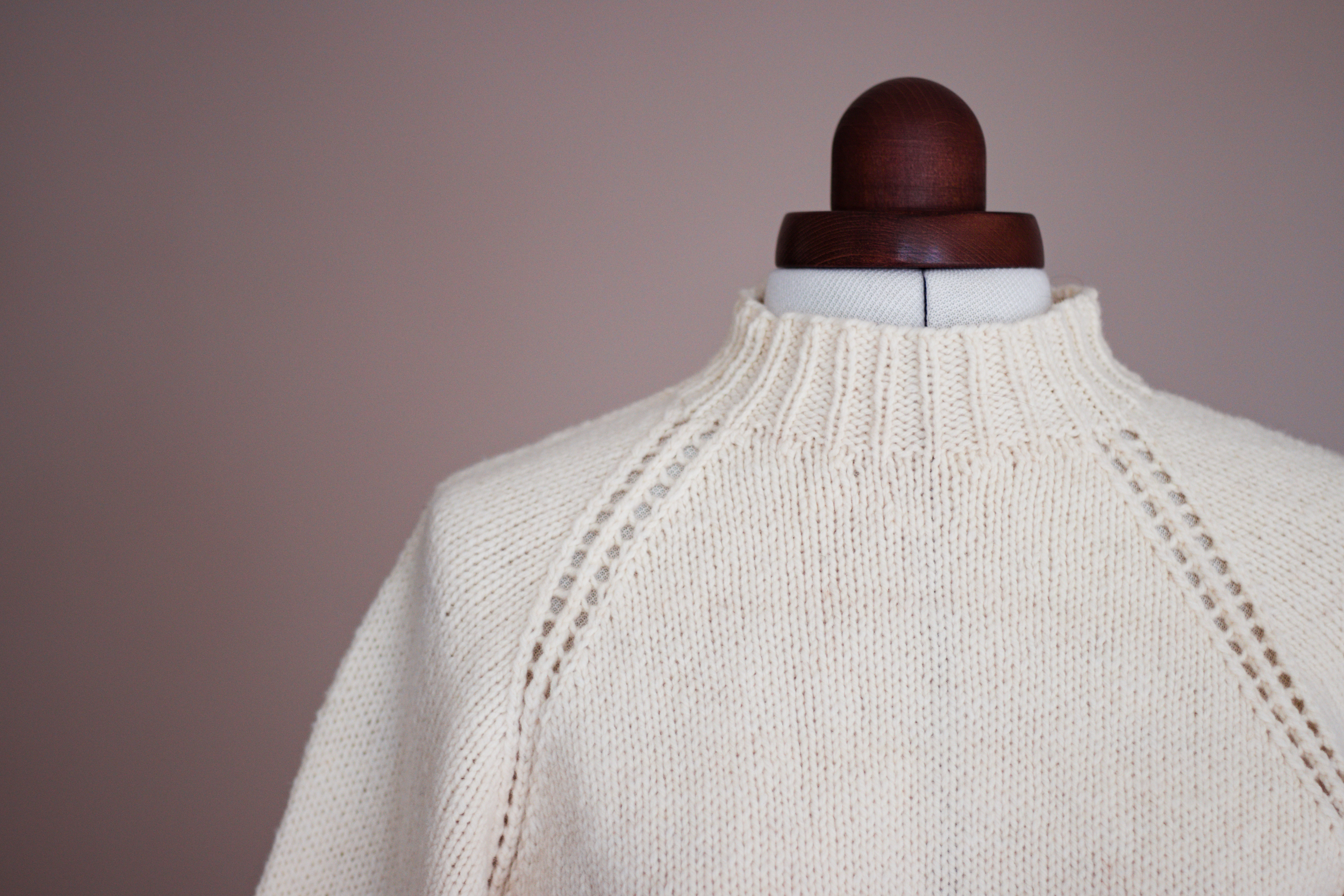
I’d hoped to photograph this one by the jetty in its namesake Lytham – it seemed only fitting – but what with lockdown 3.0 and all, it’s yet to leave the house. Hopefully one day in the not *too* distant future it will be able to! Cosy as it is, I can imagine this one worn with jeans and birkenstocks in summer too. The lace has a kind of beachy feel to it, no?
Test knit roundup
I say this every time, but it really does fill me with joy to see my knits brought to life by others! The cream sweater that I imagined for my wardrobe also looks fab in purple, blue, green, grey, pink, yellow… if I do say so myself. Huge thank you to this wonderful group of test knitters who worked on their sweaters over the holidays and put up with my many questions about sizing! You guys are the best. I’ll share a roundup with links to their pages on my Instagram story highlights, too.
LYTHAM SWEATER KNITTING PATTERN DETAILS
YARN
Worsted weight yarn, approximately 1103 (1154; 1199; 1388; 1468) [1522; 1759; 1830; 2055] metres / 1204 (1261; 1310; 1516; 1603) [1662; 1921; 1999; 2244] yards.
Sample shown in De Rerum Natura Gilliatt, a woolen spun 100% merino worsted weight yarn, in shade ‘Sel’. If using this yarn, you will need 5 (5; 5; 6; 6) [7; 8; 8; 9] skeins.
Other yarns used by test knitters:
Malabrigo Silky Merino // Lion Brand Feels Like Butta // 4 Seasons Marvel Denim Effects Aran // Yarn Bee Must Be Merino // DROPS Nepal // Big Twist Value Solids
NEEDLES & NOTIONS
5mm circular needles of varying lengths for the body, sleeves and yoke. 4.5mm circular needles of your preferred length for working the hem and neckband.
You will also need scrap yarn for holding stitches, 8 stitch markers (with one marker different to the rest to indicate the beginning of round), and a tapestry needle.
GAUGE
18 sts and 25 rows to 4†/ 10cm in stocking stitch on 5mm needles, blocked.
SIZING: 1 (2; 3; 4; 5) [6; 7; 8; 9] to fit bust 28-30 (32-34; 36-38; 40-42; 44-46) (48-50; 52-54; 56-58; 60-62) inches / 71-76 (81-86; 91-97; 102-107; 112-117) (122-127; 132-137; 142-147; 152-157) cm.
NOTES
Construction: the Lytham sweater is worked in the round from the bottom up. Wide straight sleeves begin with a deep lace border, which fades into stocking stitch. A gently dipped hem adds shape to the body, which can be easily lengthened or shortened. Body and sleeves are joined to work a raglan yoke in the round, where changing rates of decrease make for a loose-fitting but not crumpled yoke. The sleeve lace pattern is echoed in minimal lines of eyelets along the raglans. Finally, the neck is shaped with German short rows and a ribbed neckband is worked to whatever length you desire.
Yarn choices: any yarn that meets the gauge can technically be used, however it is worth considering that in a heavy / slippy yarn (such as a silky worsted spun), the weight of the sleeves may drag them down, so you may need to reduce the sleeve length to compensate. Take into account how much your swatch grows when blocked and how much vertical stretch the fabric has.
I LOVE seeing people knit my patterns and make them their own – please tag @lilykatemakes and #LythamSweater on Instagram. 🙂
The Lytham Sweater pattern is also available via Ravelry and Etsy.
Lily Kate x

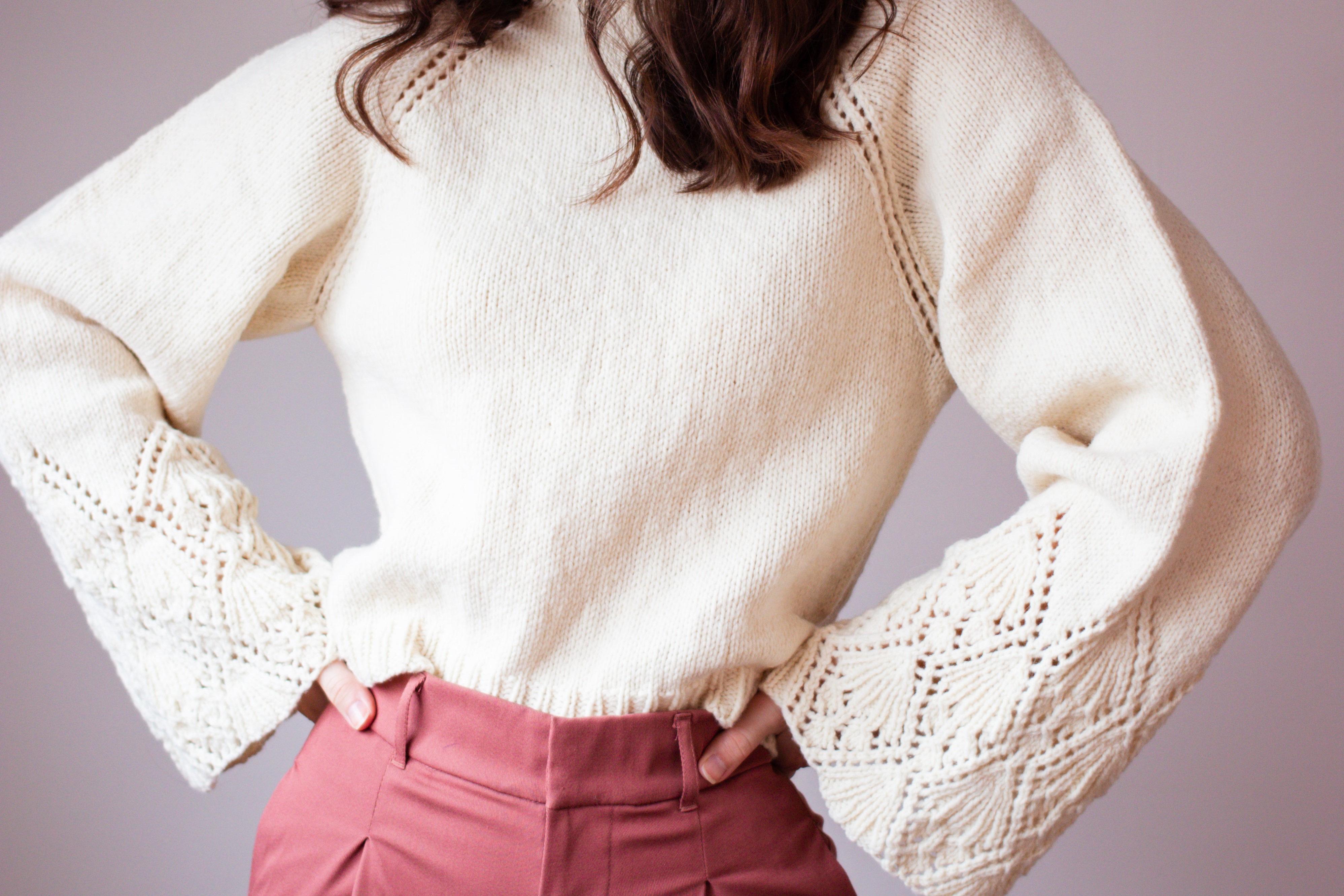
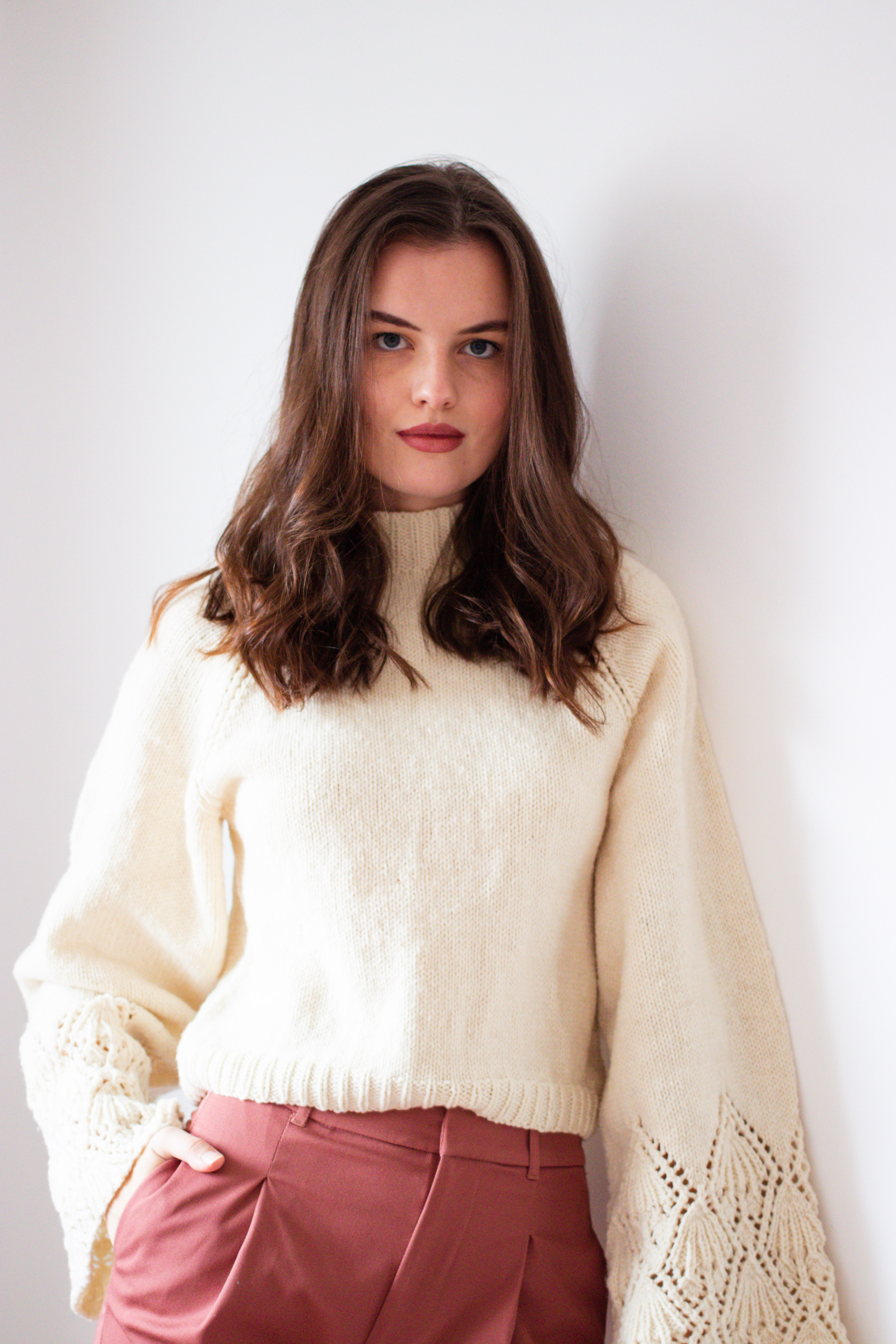
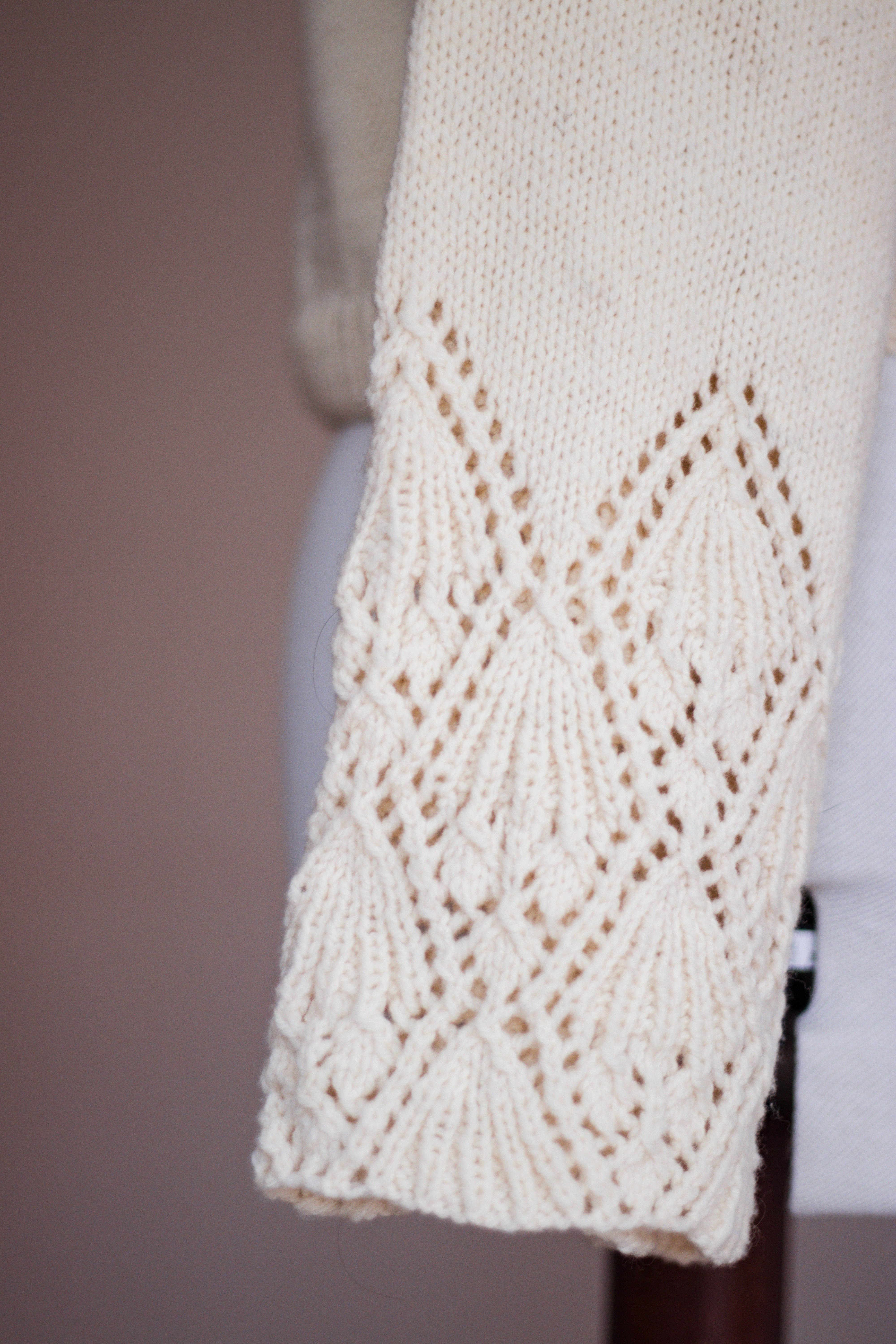
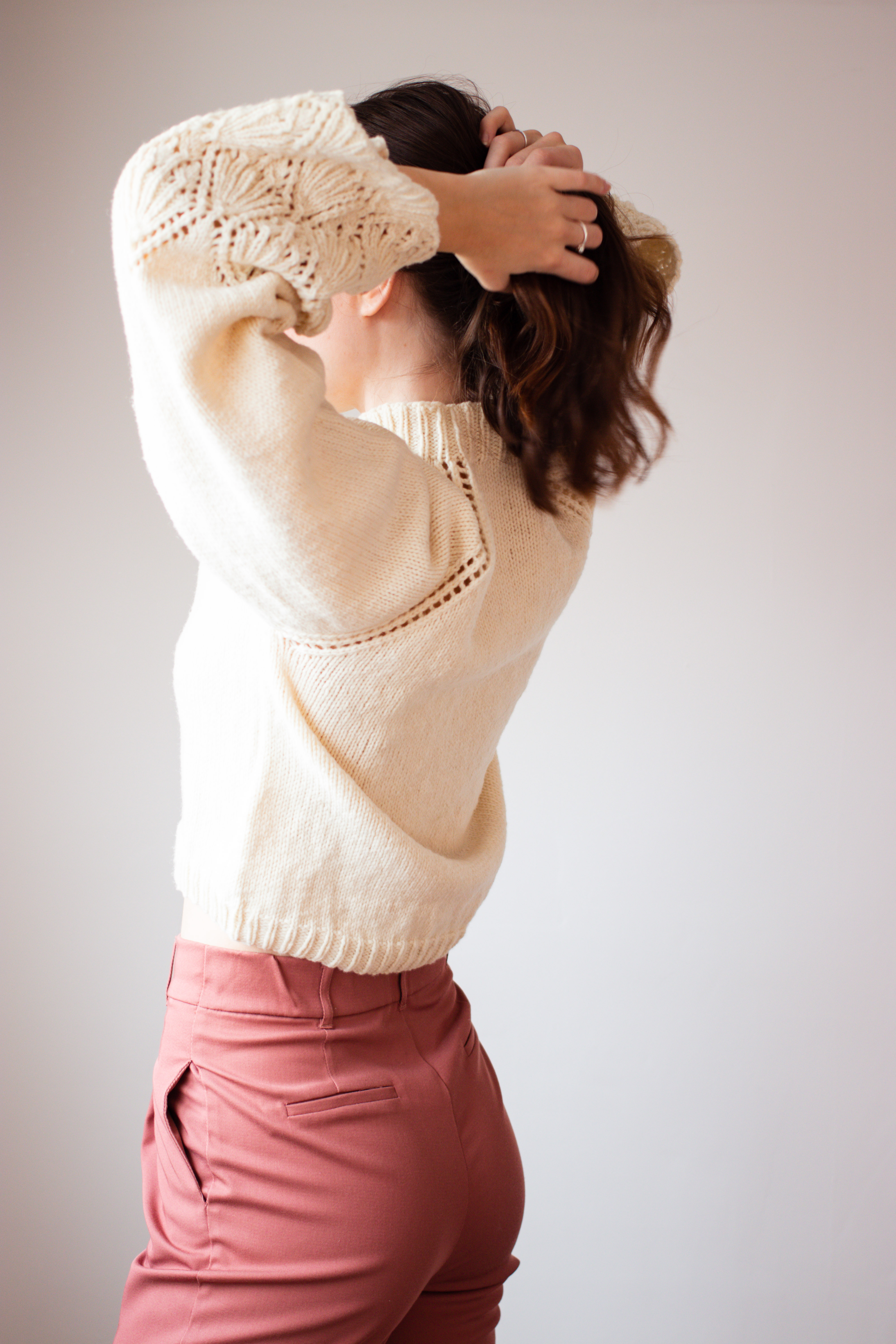
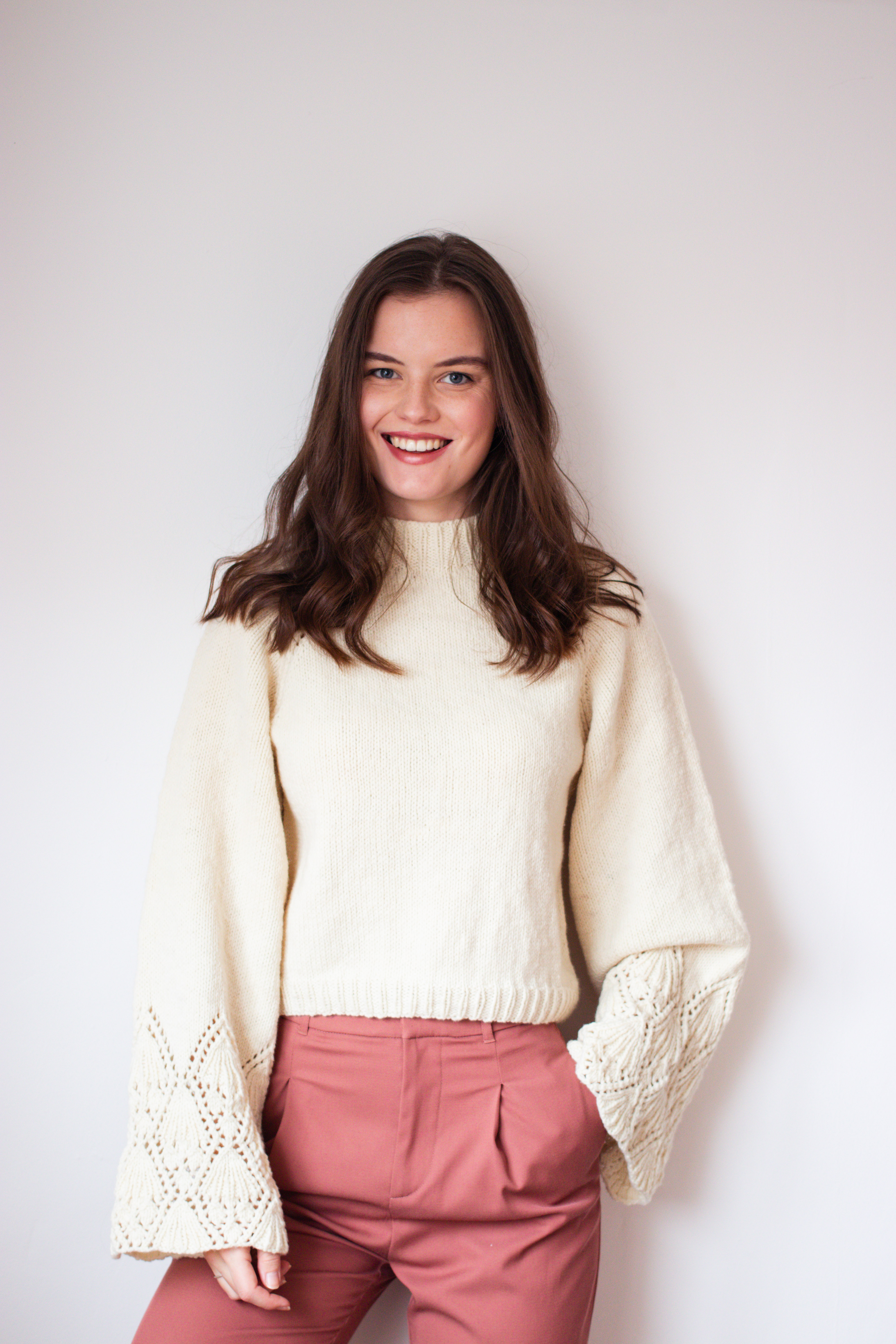
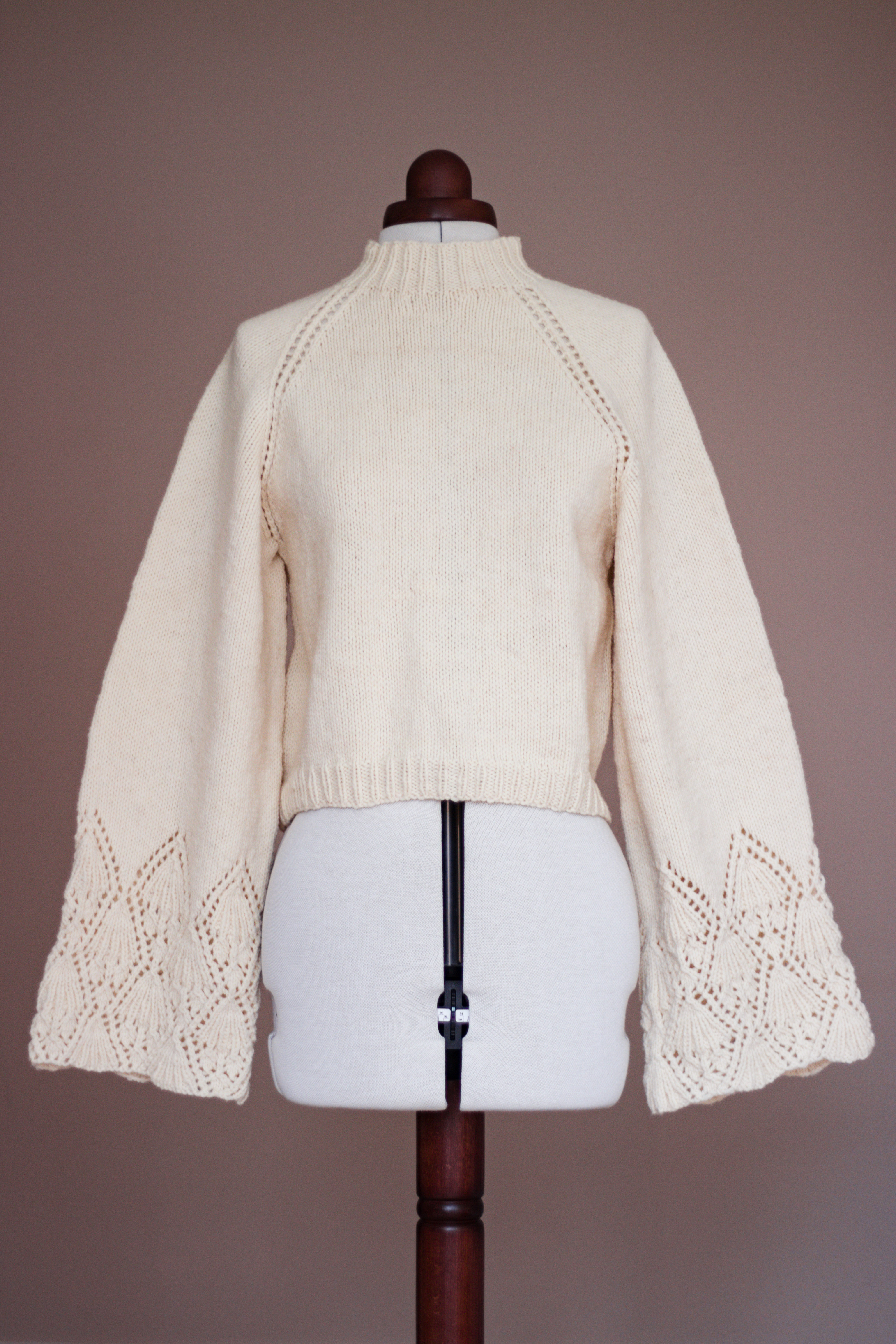
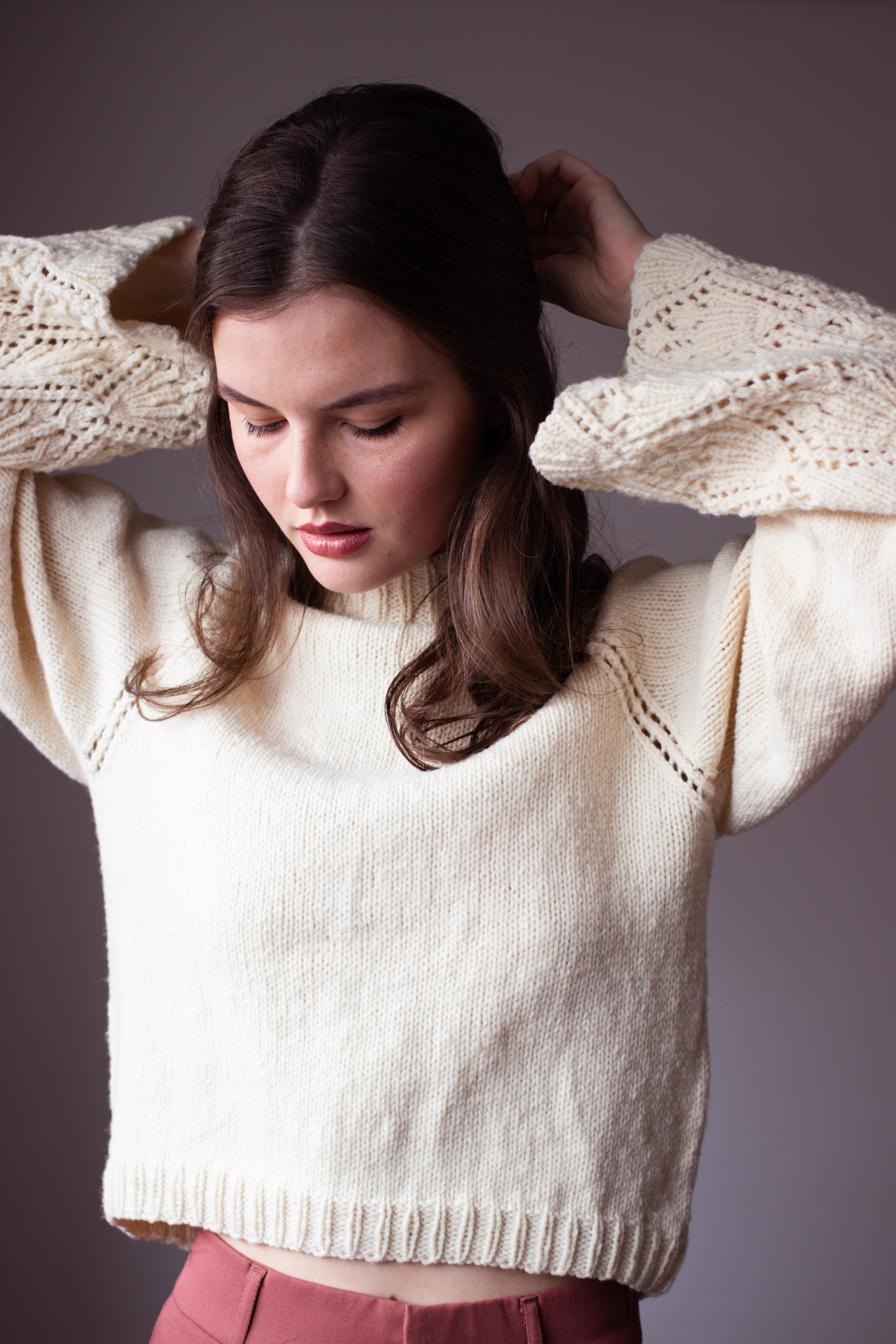

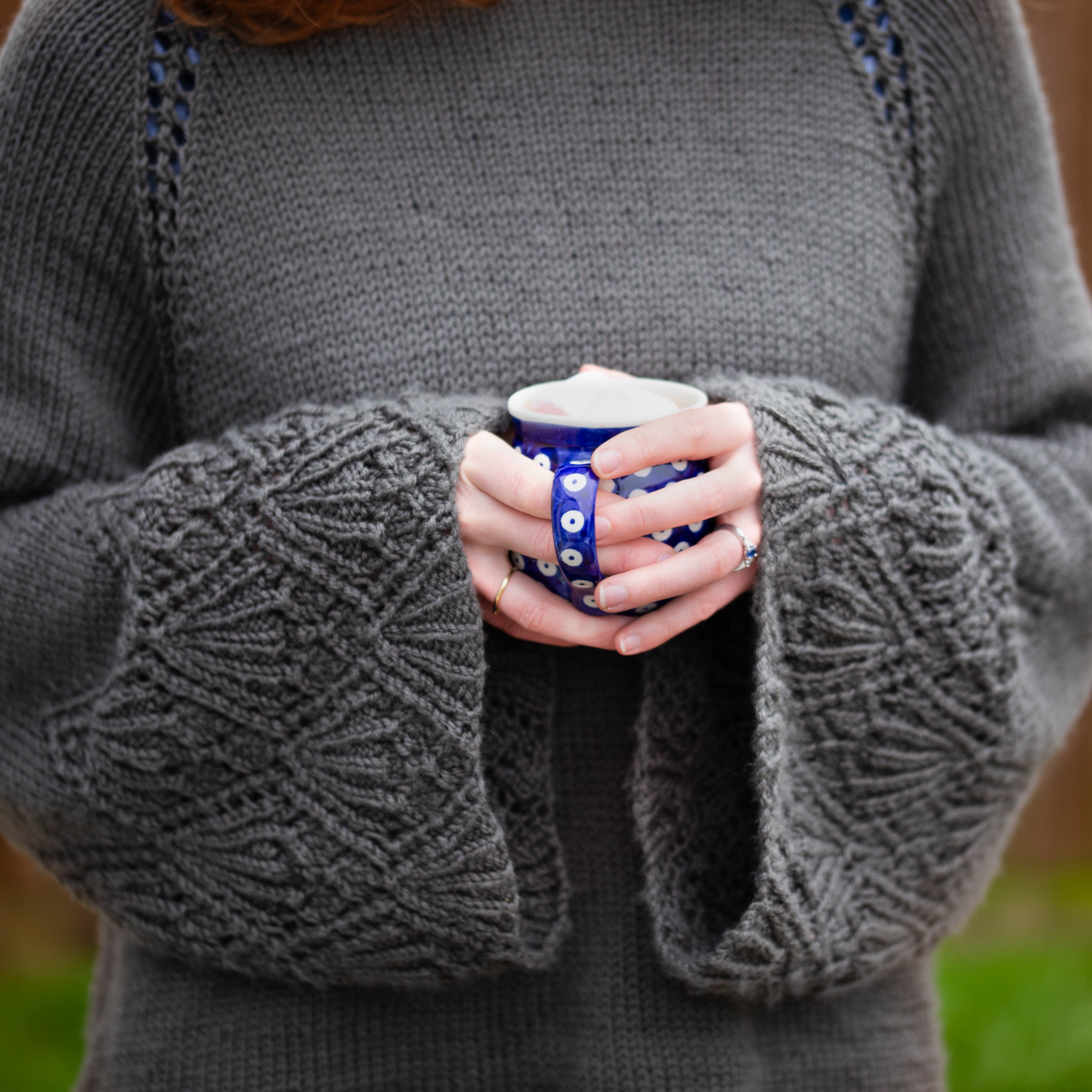
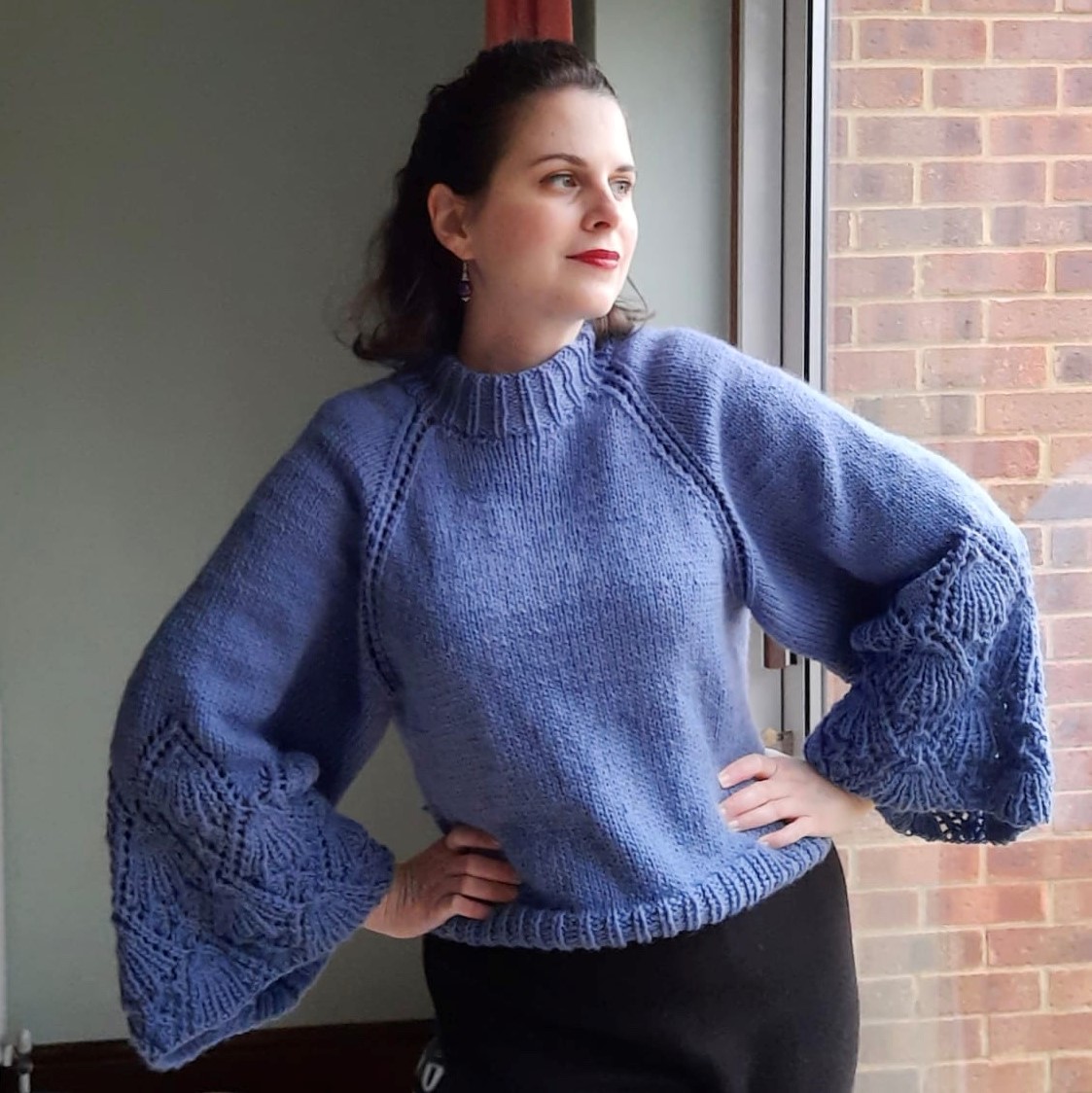
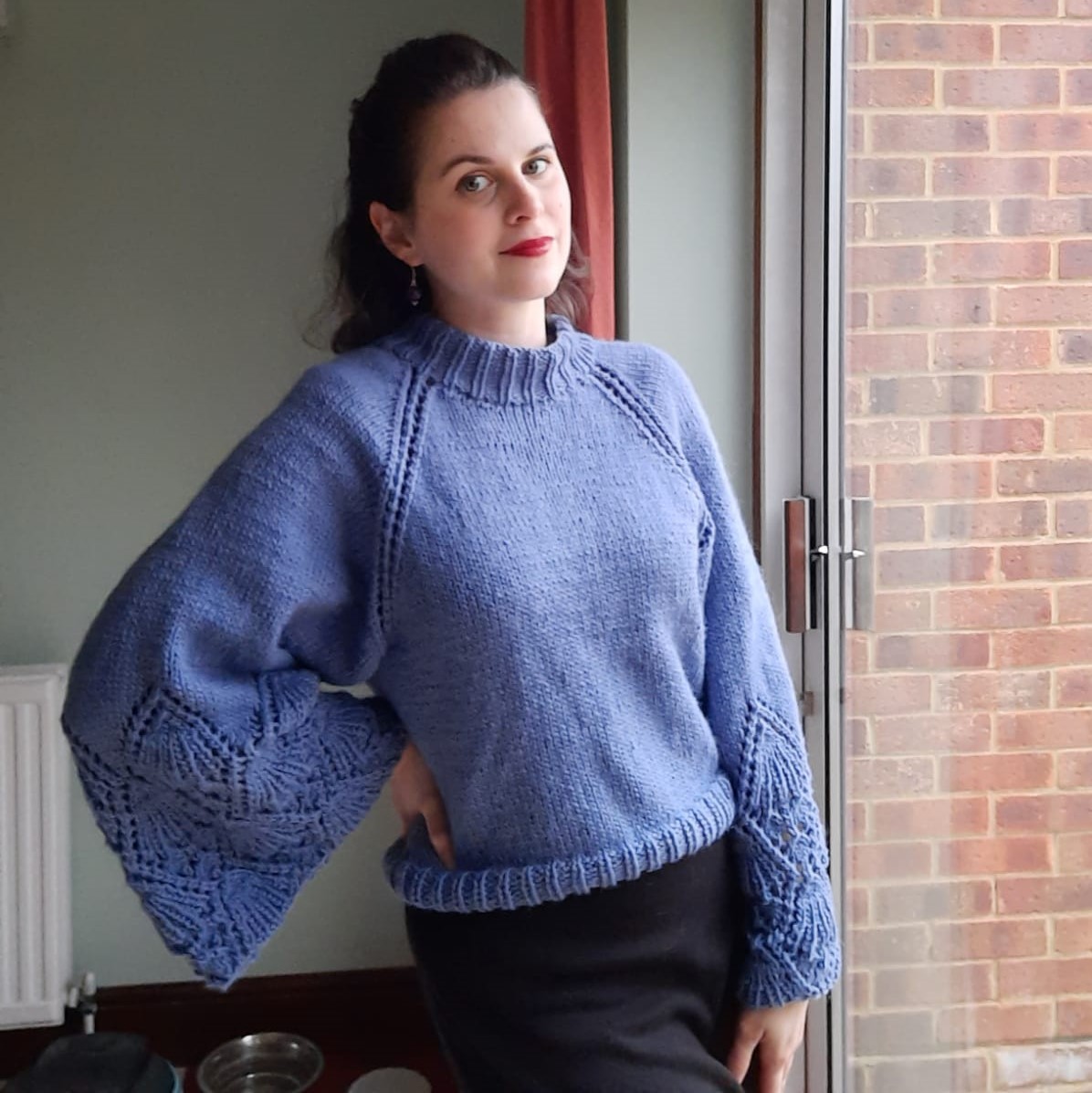

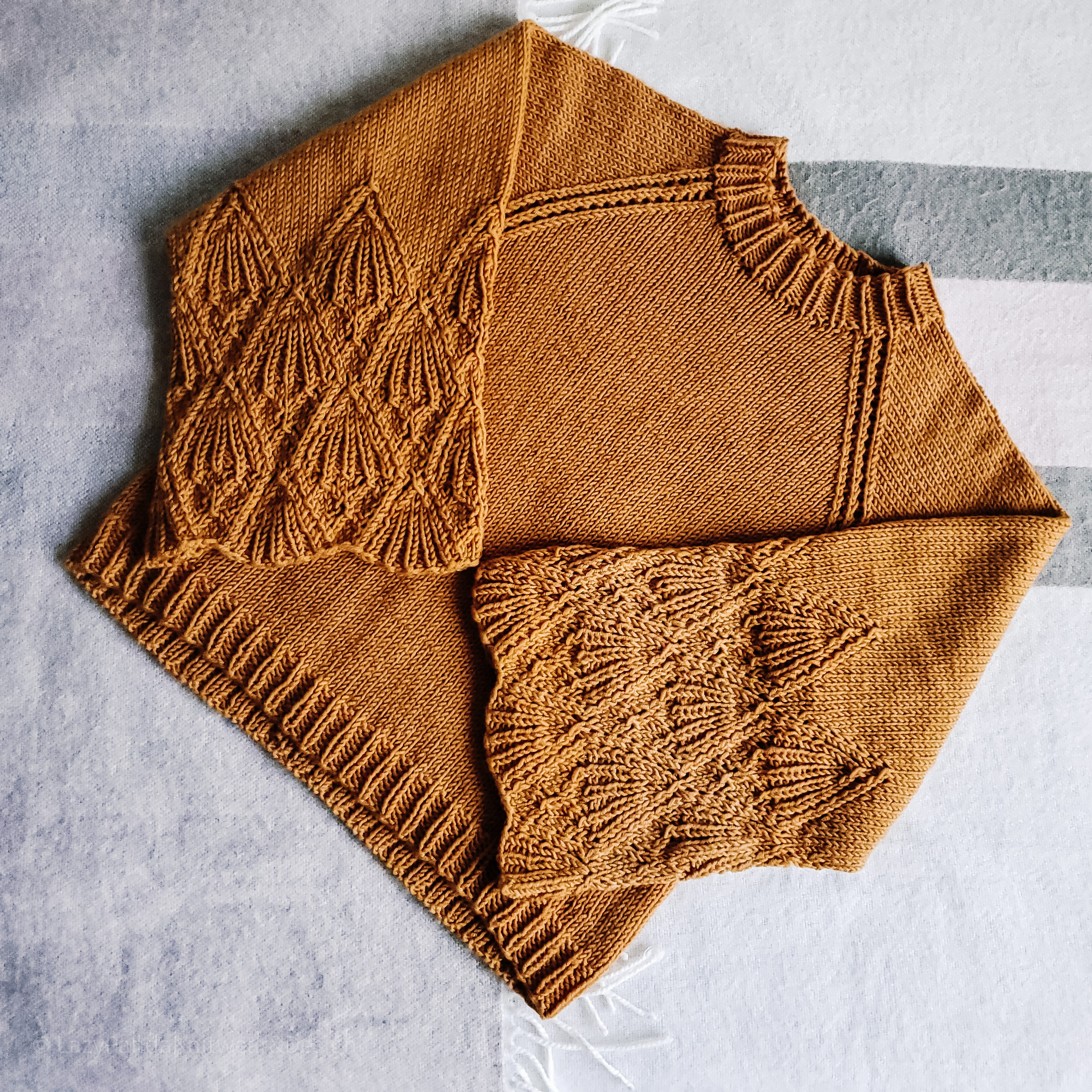
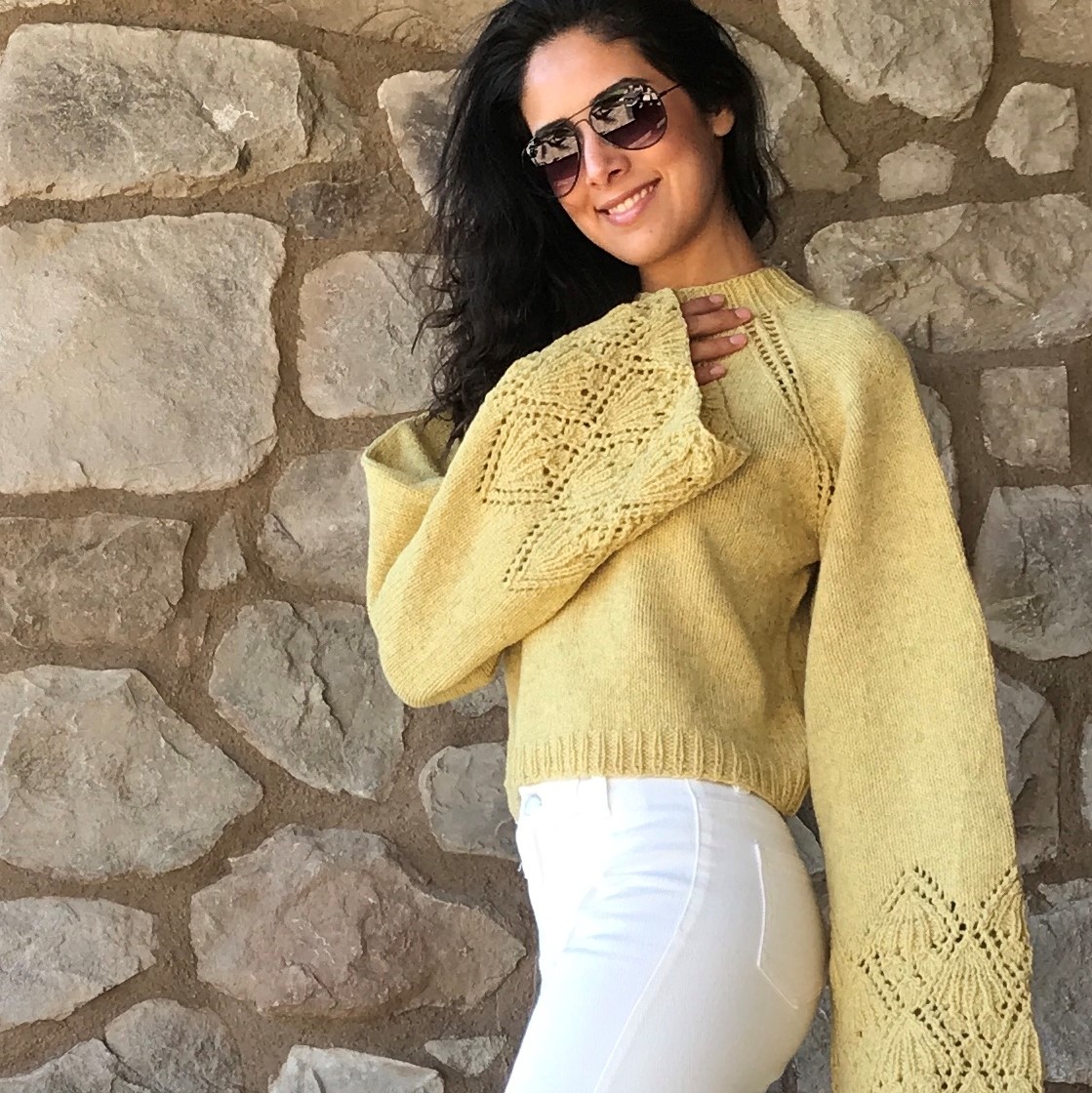
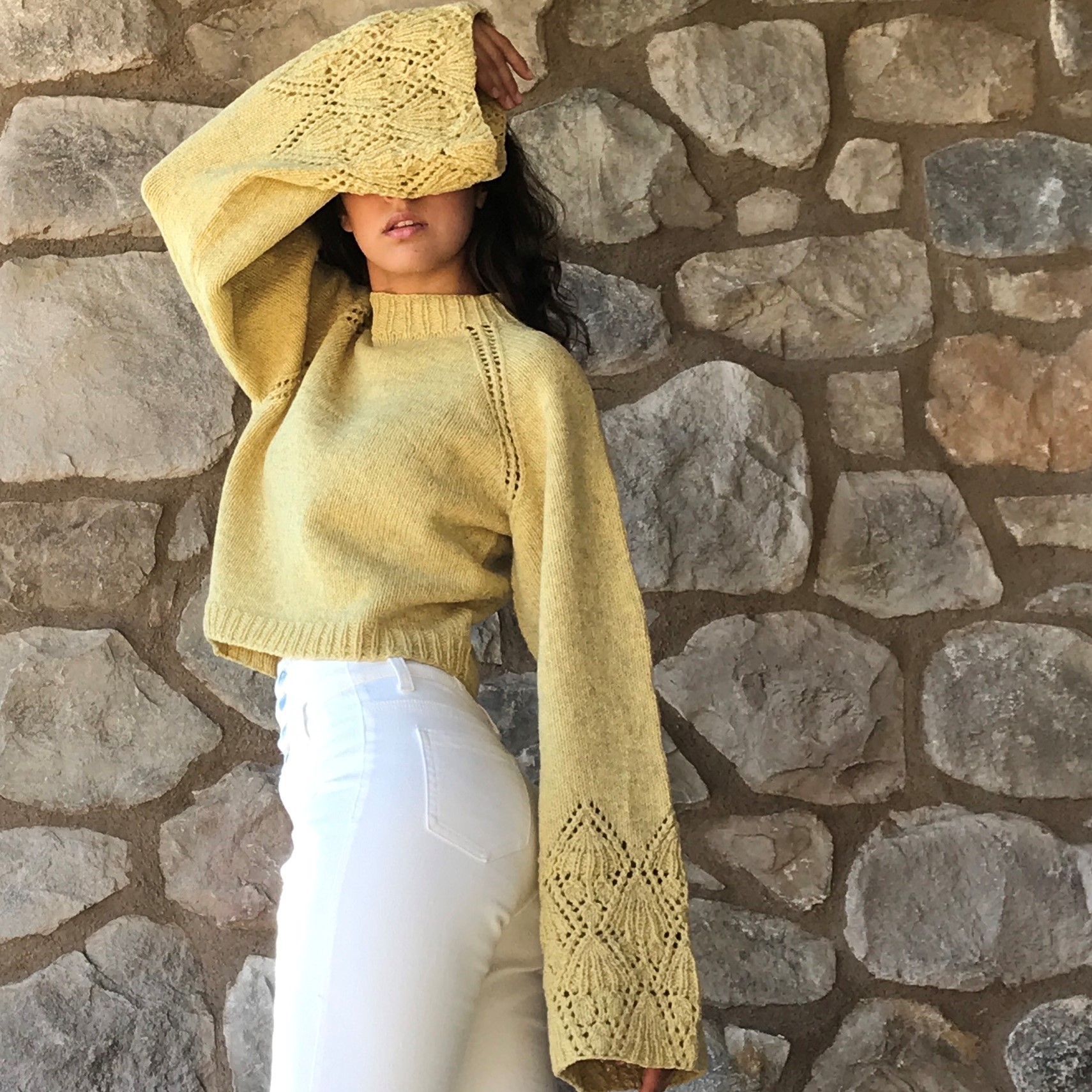
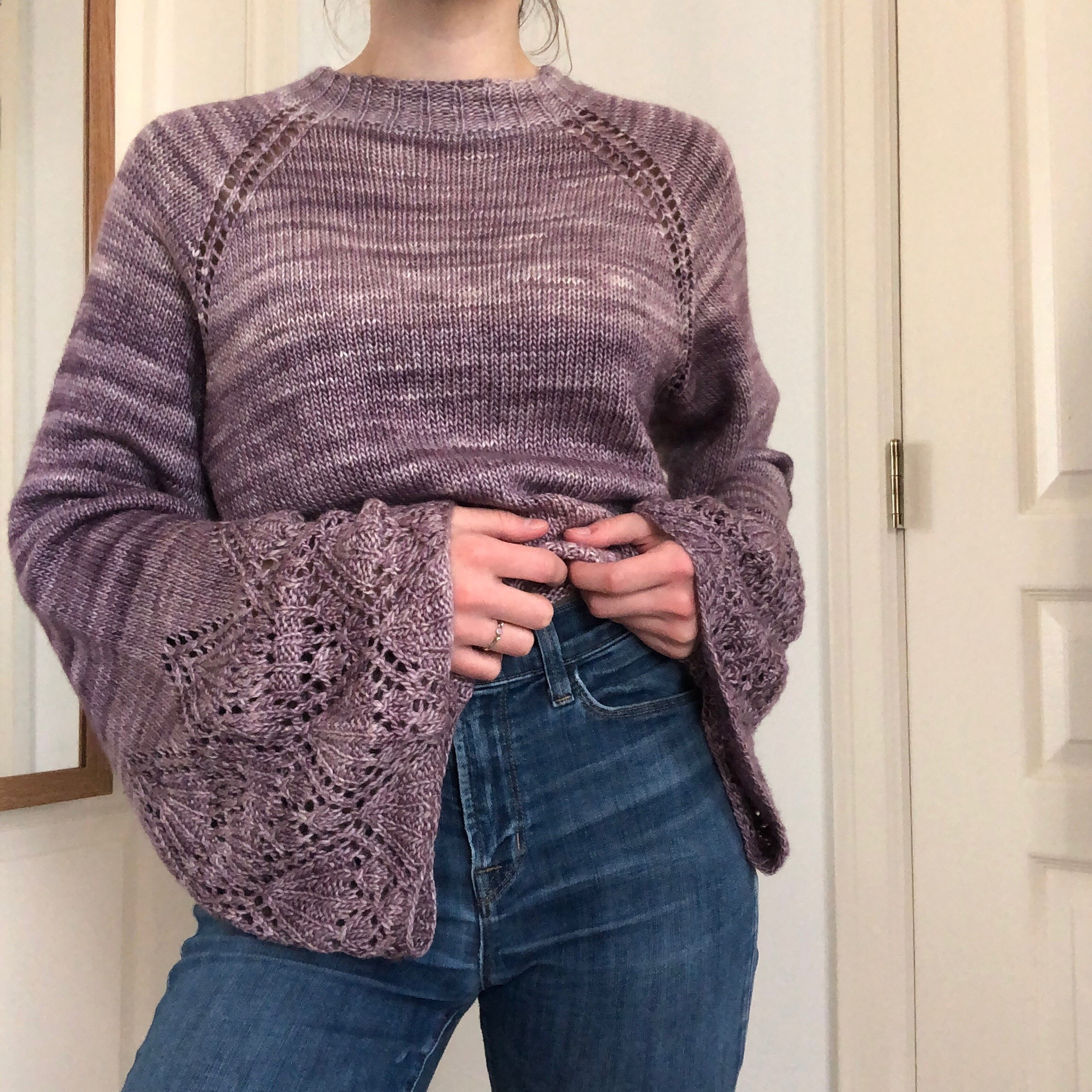
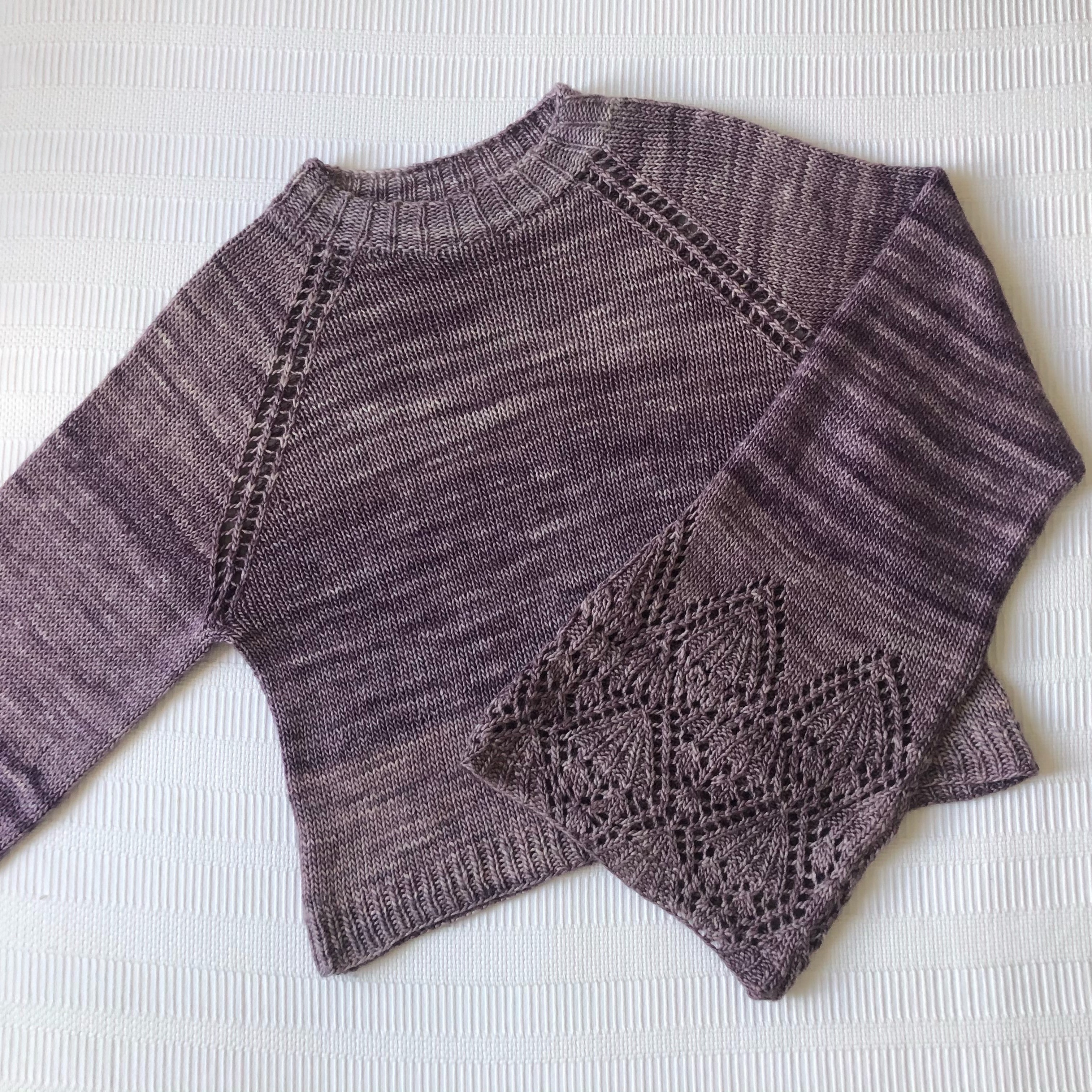


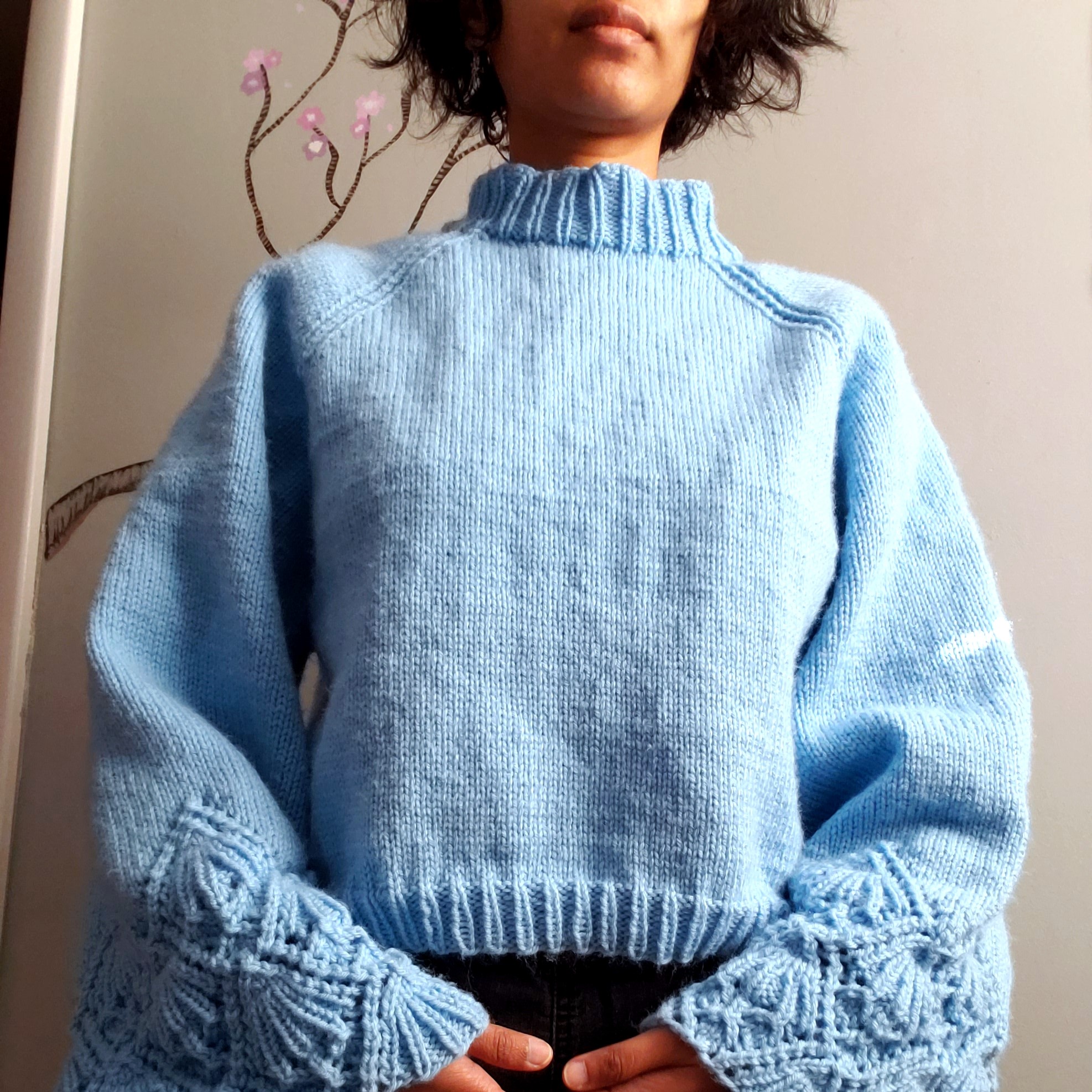
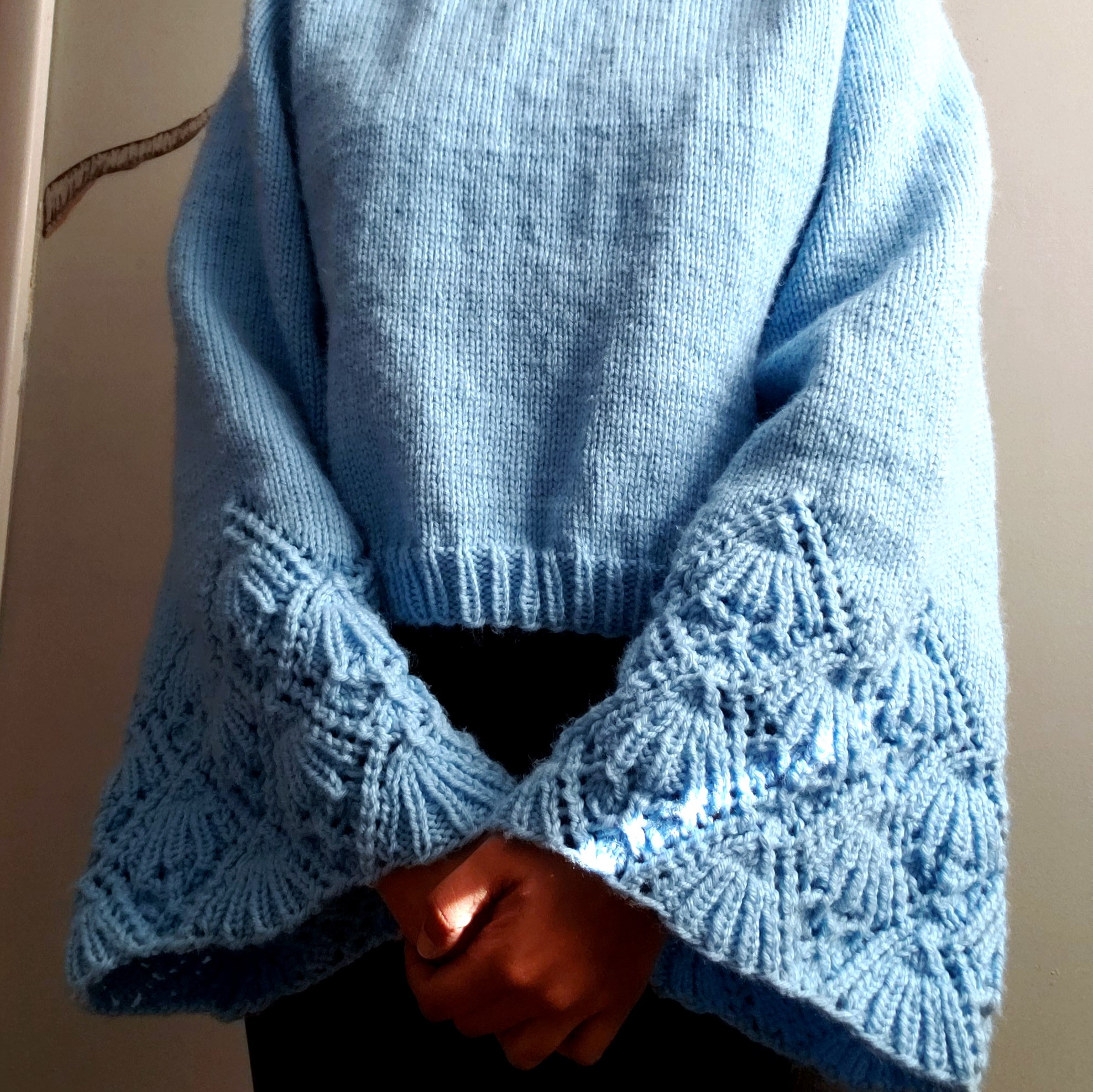
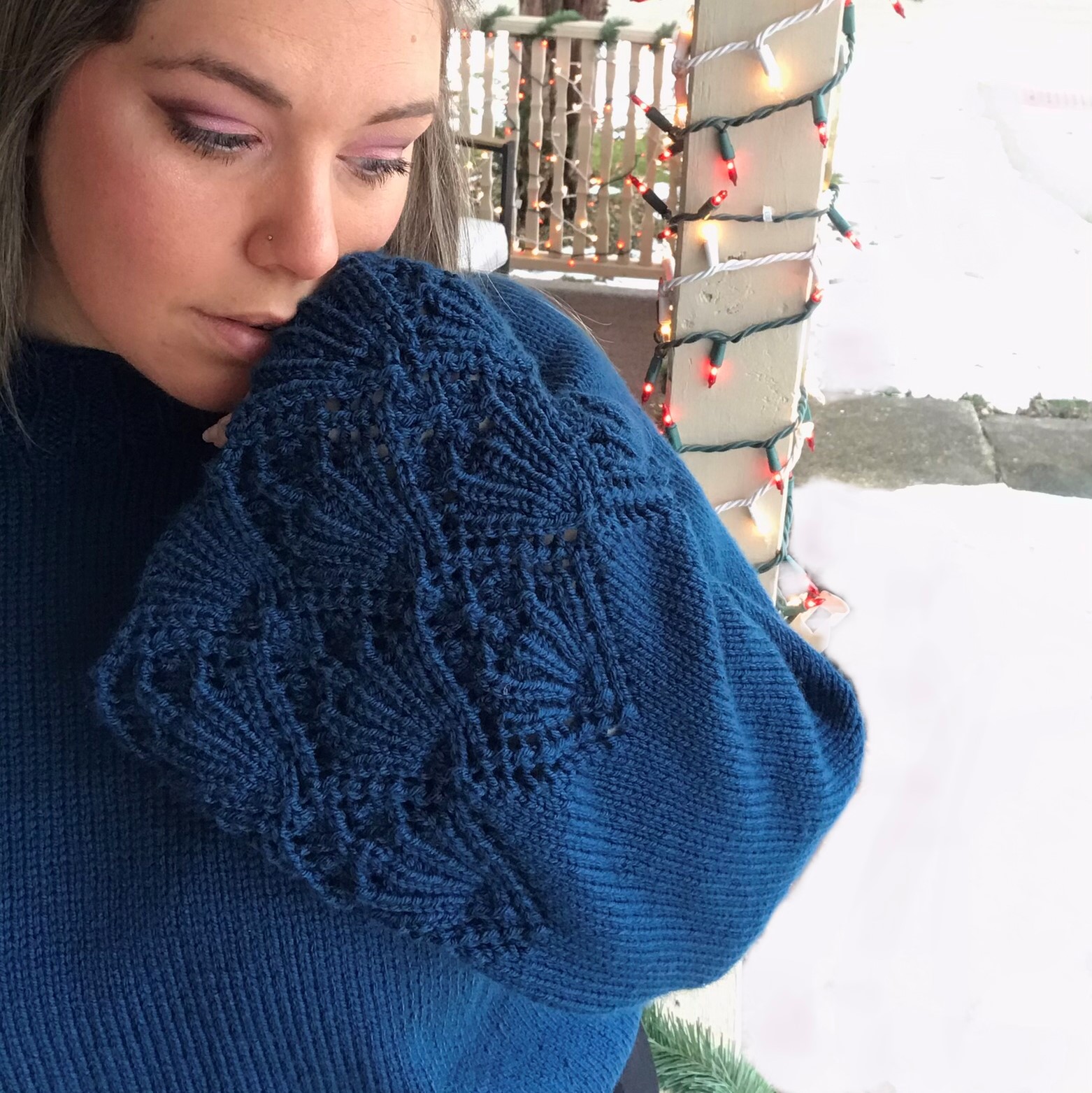
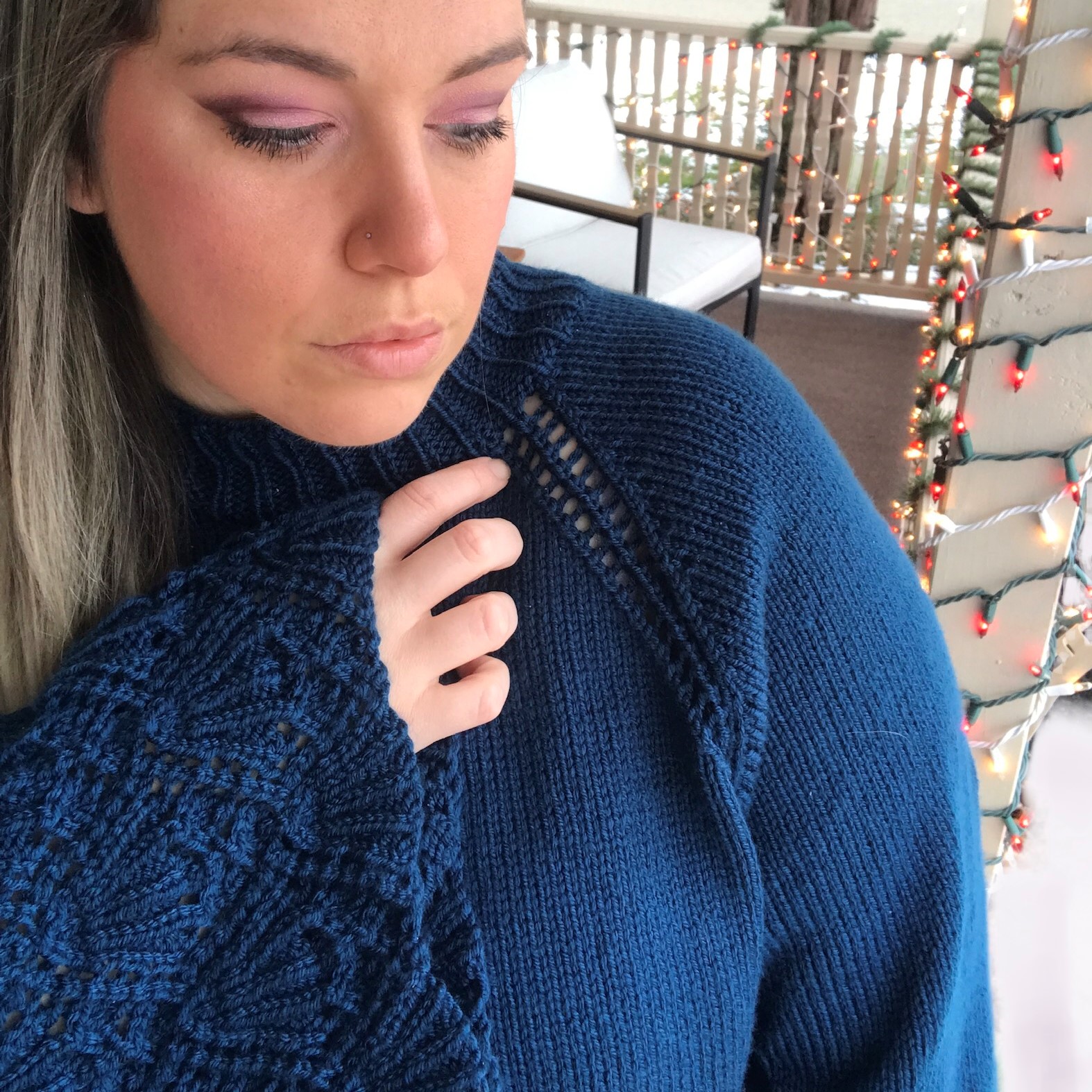
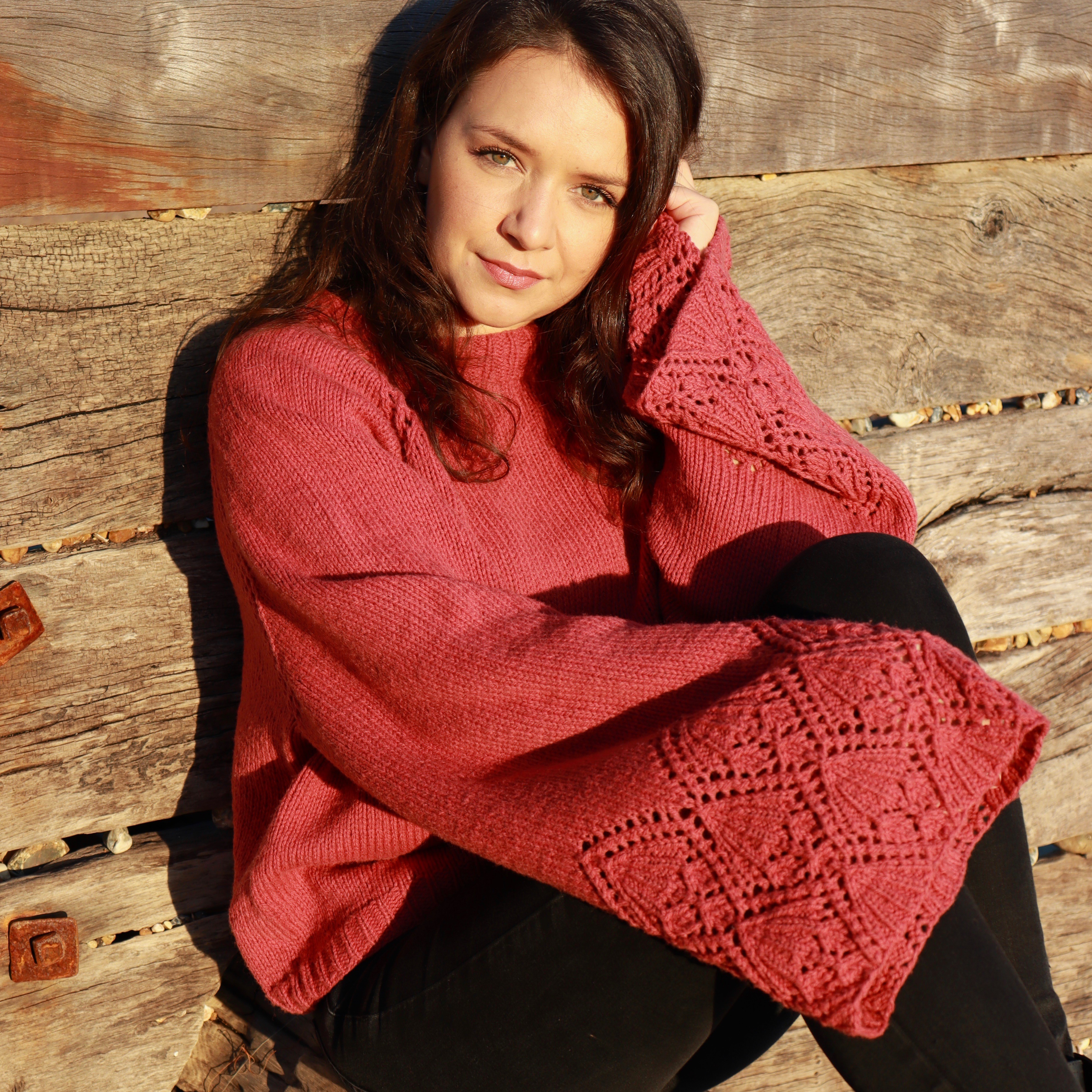
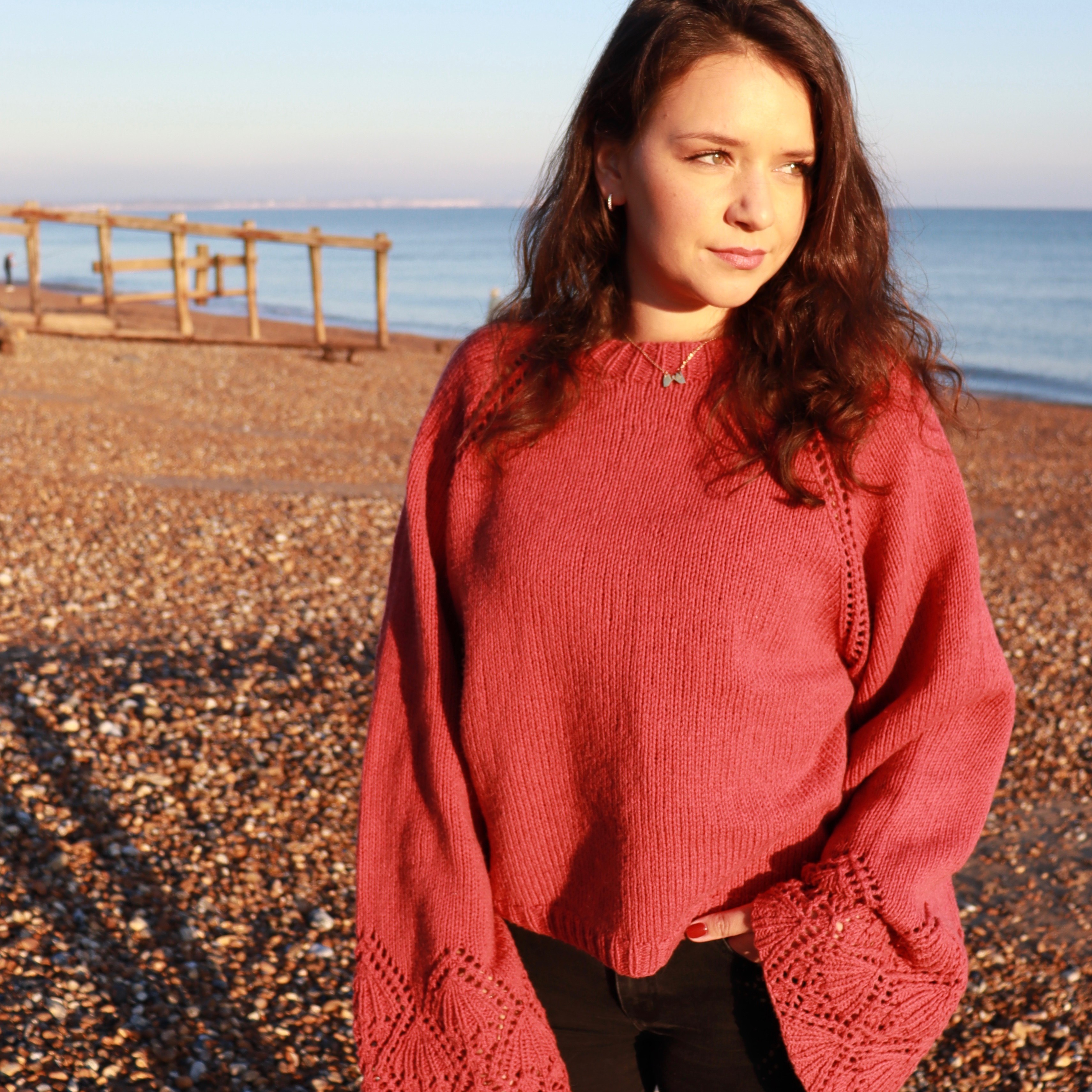
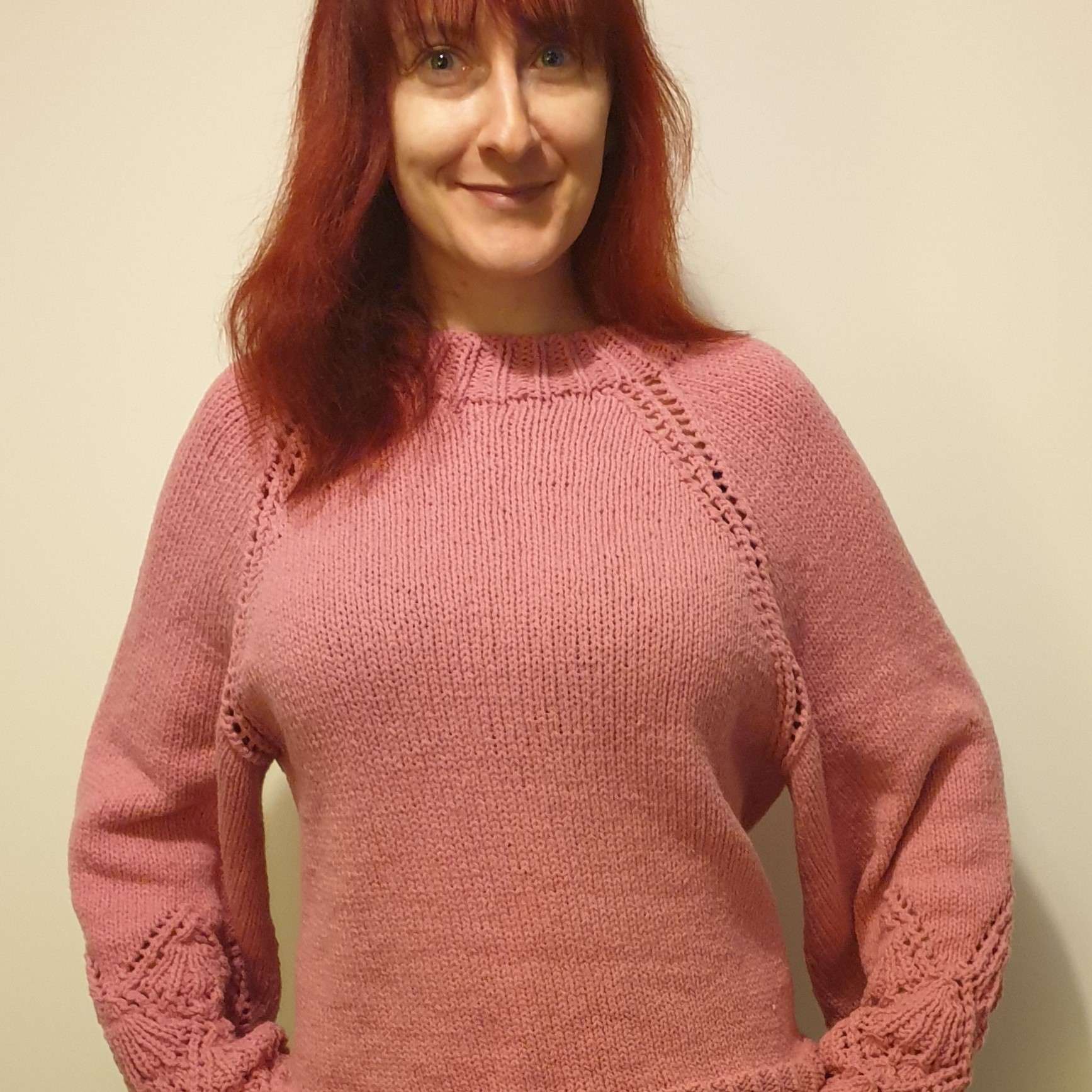
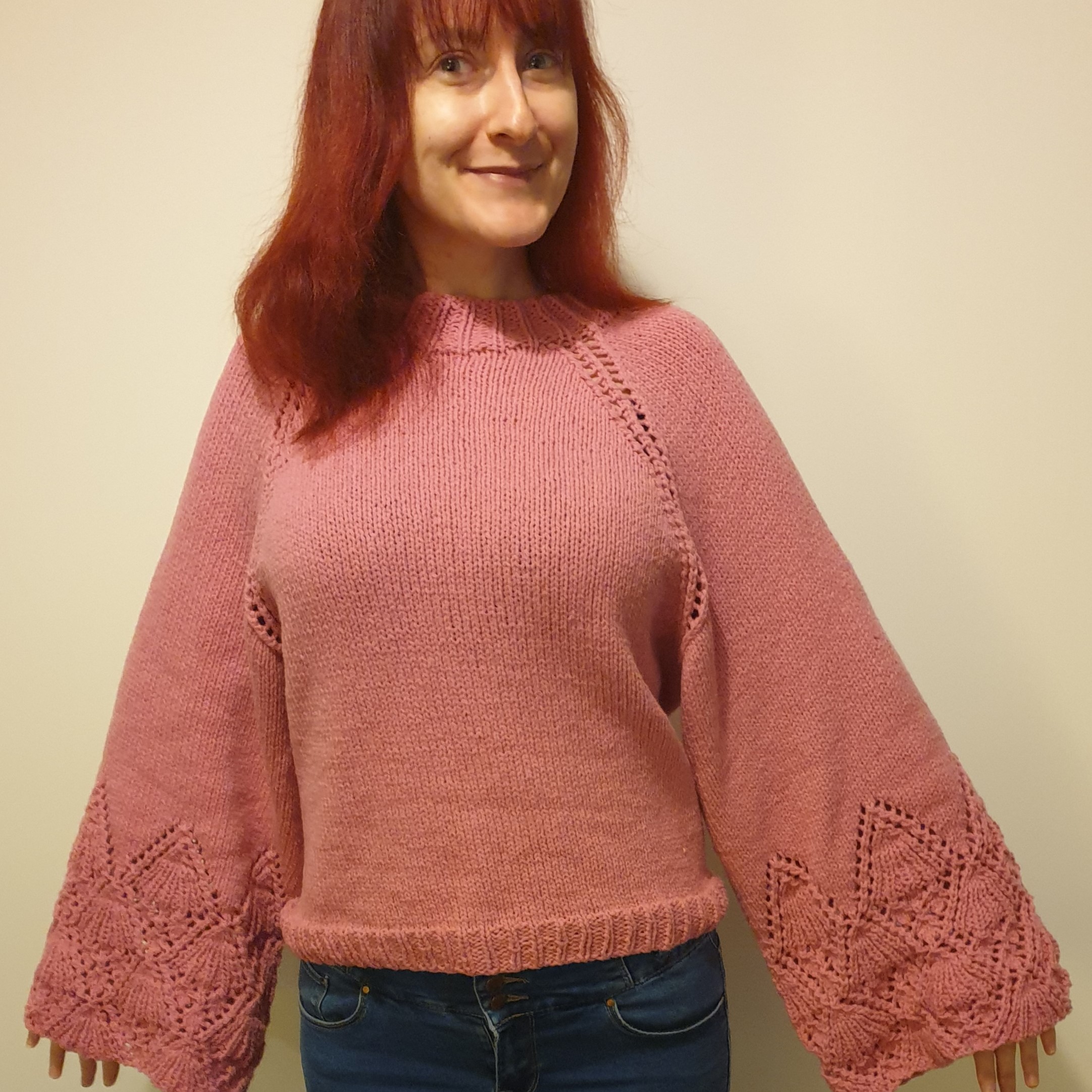
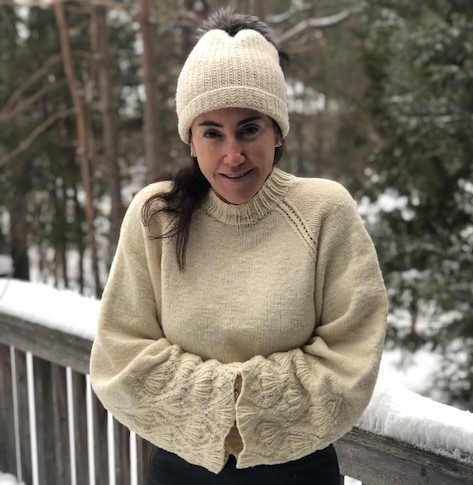
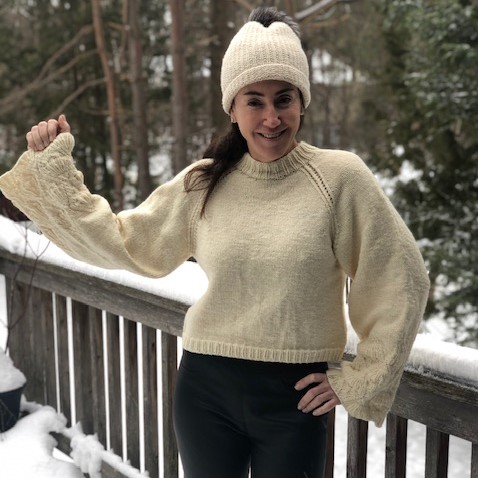
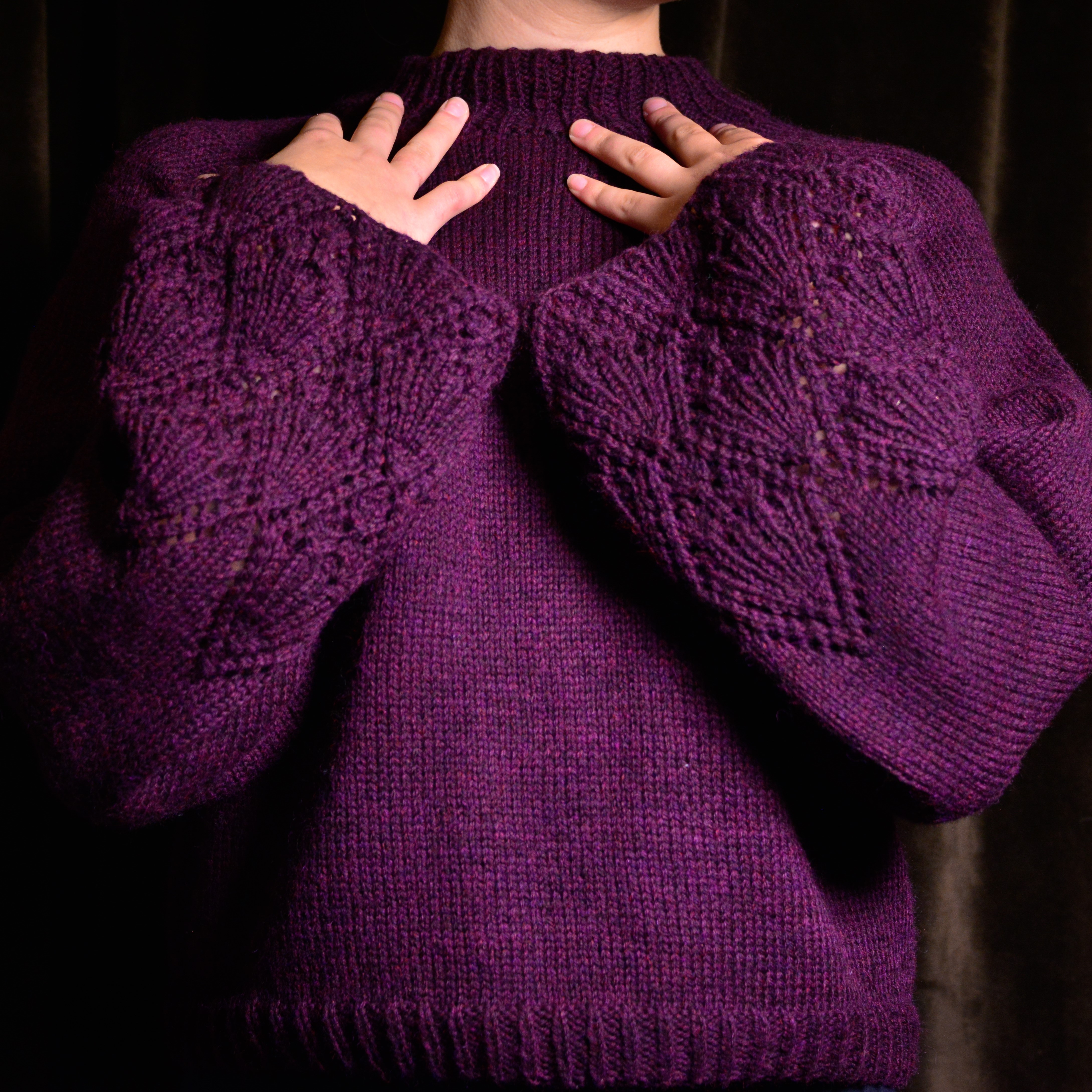
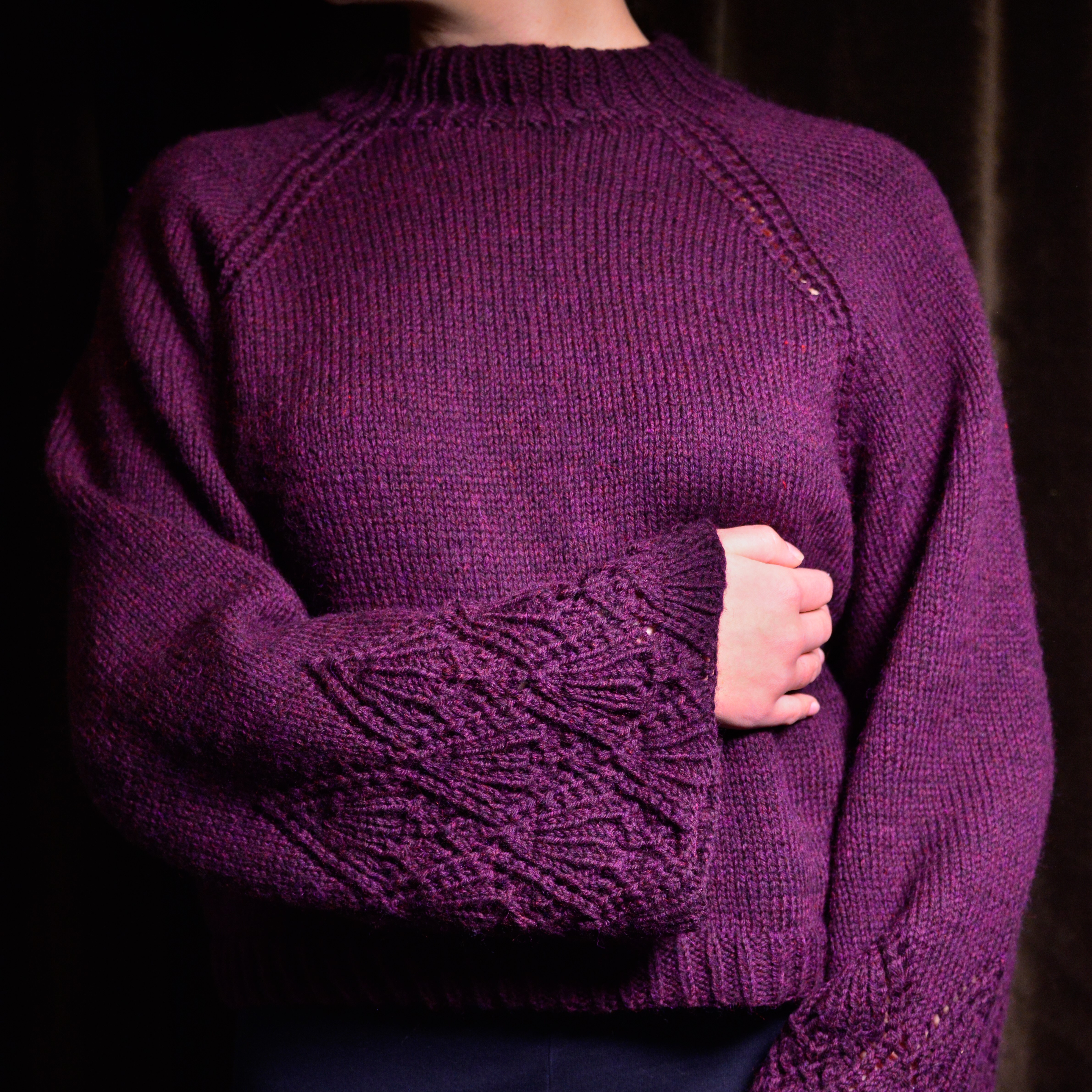
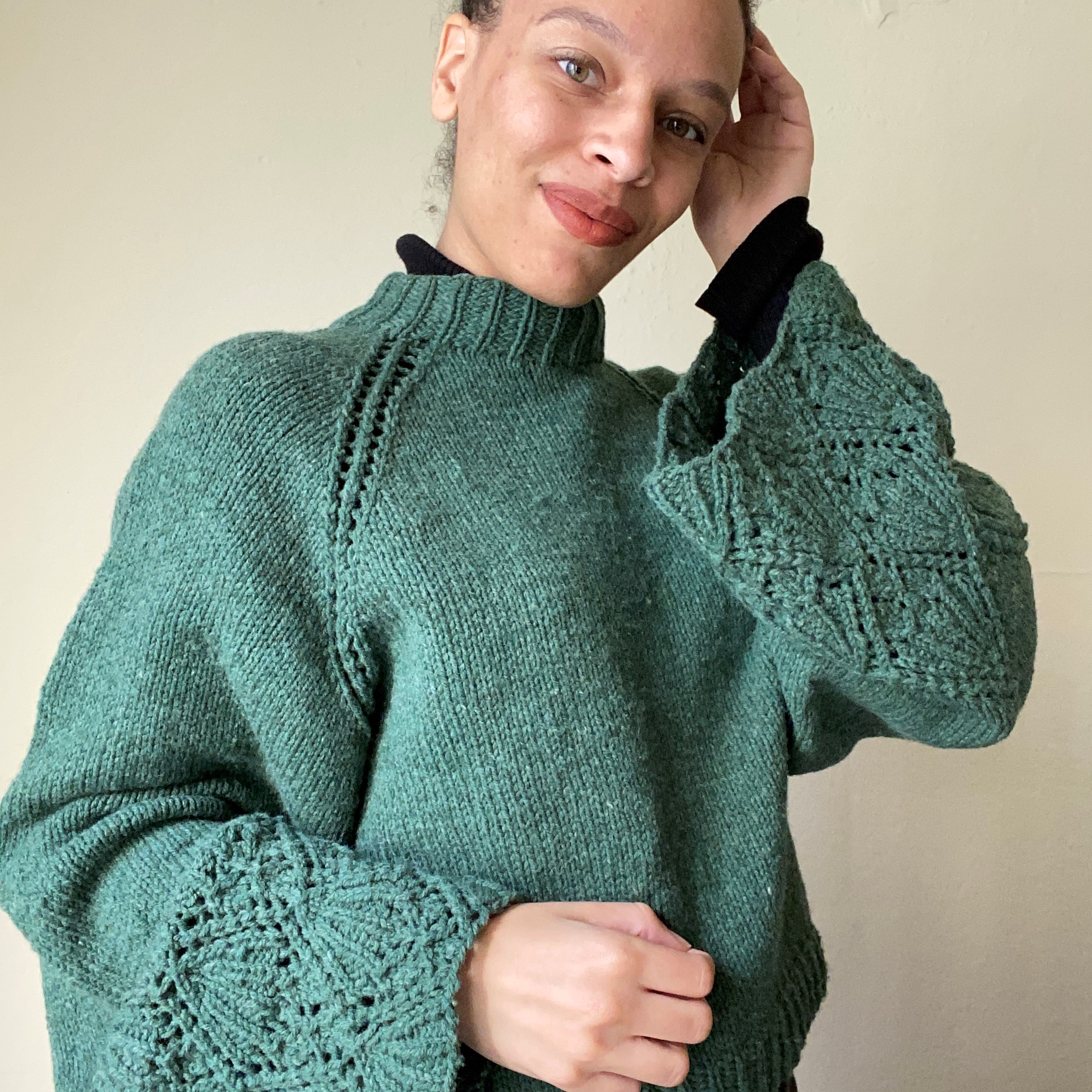
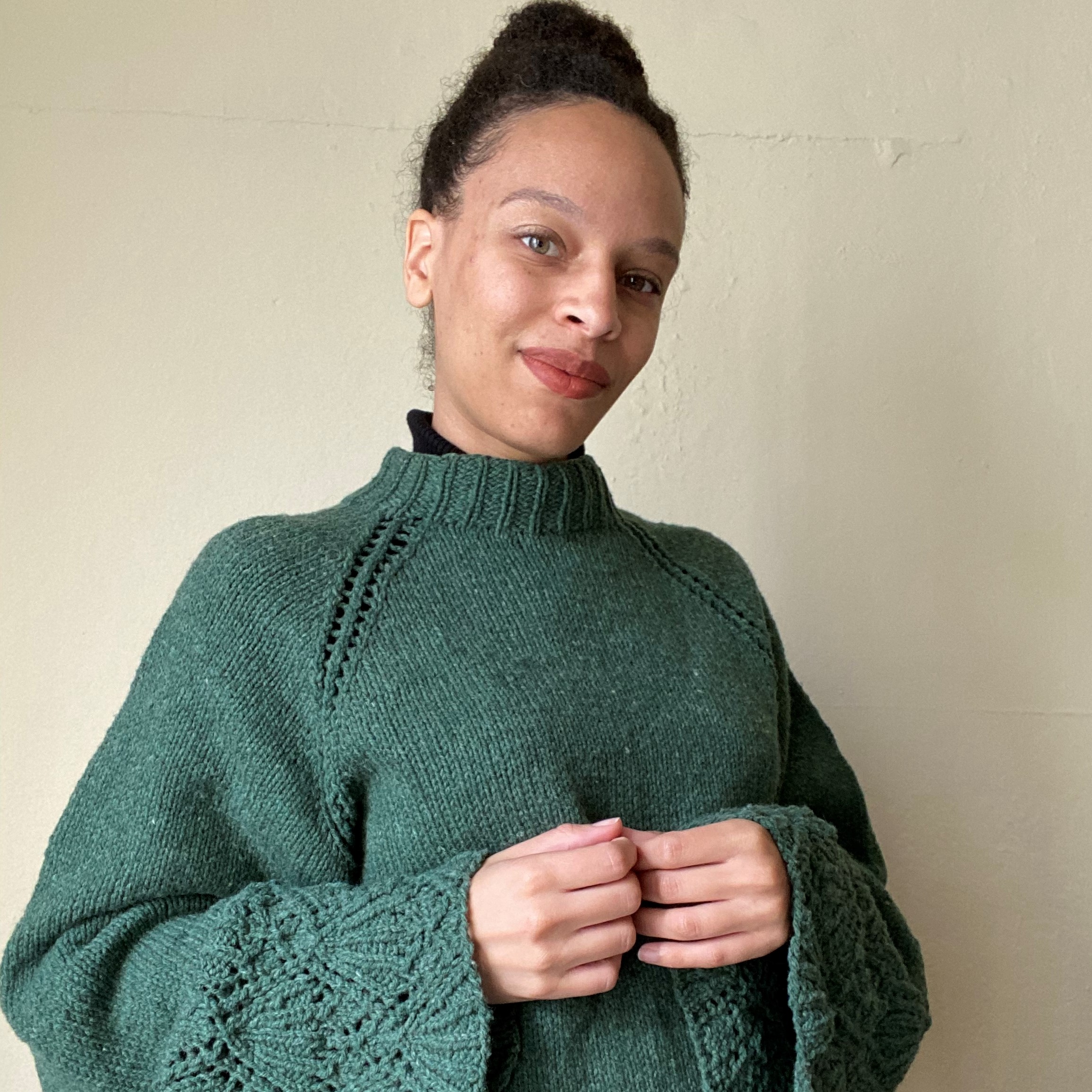
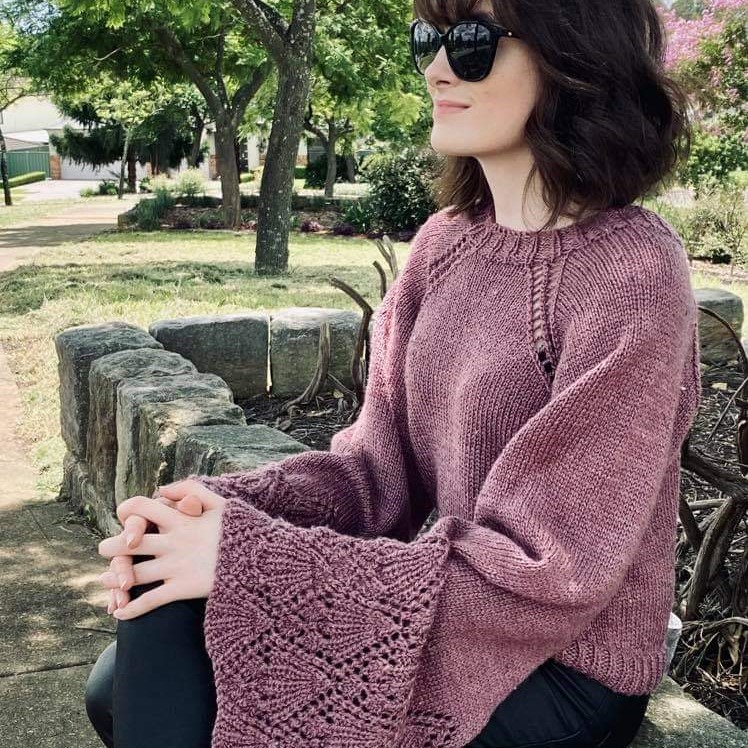
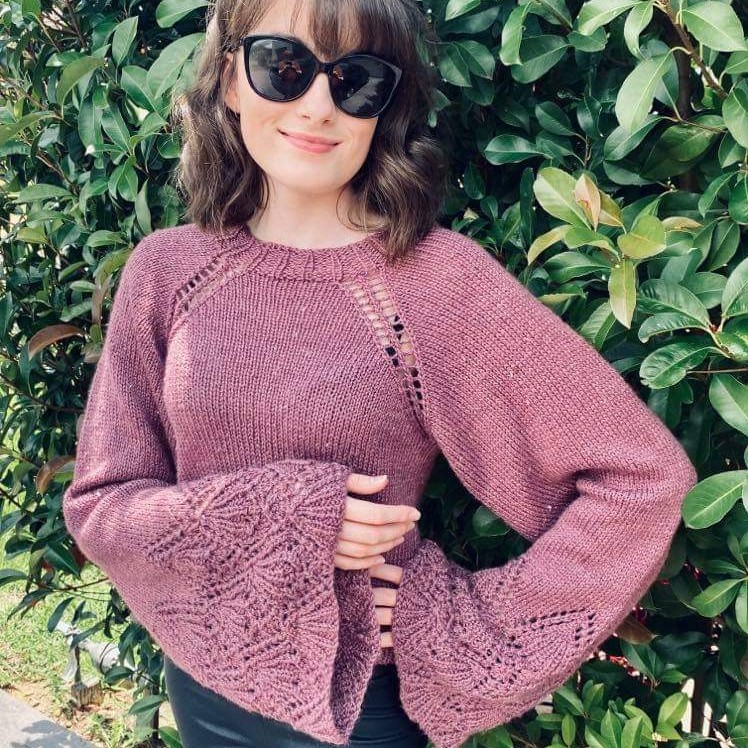
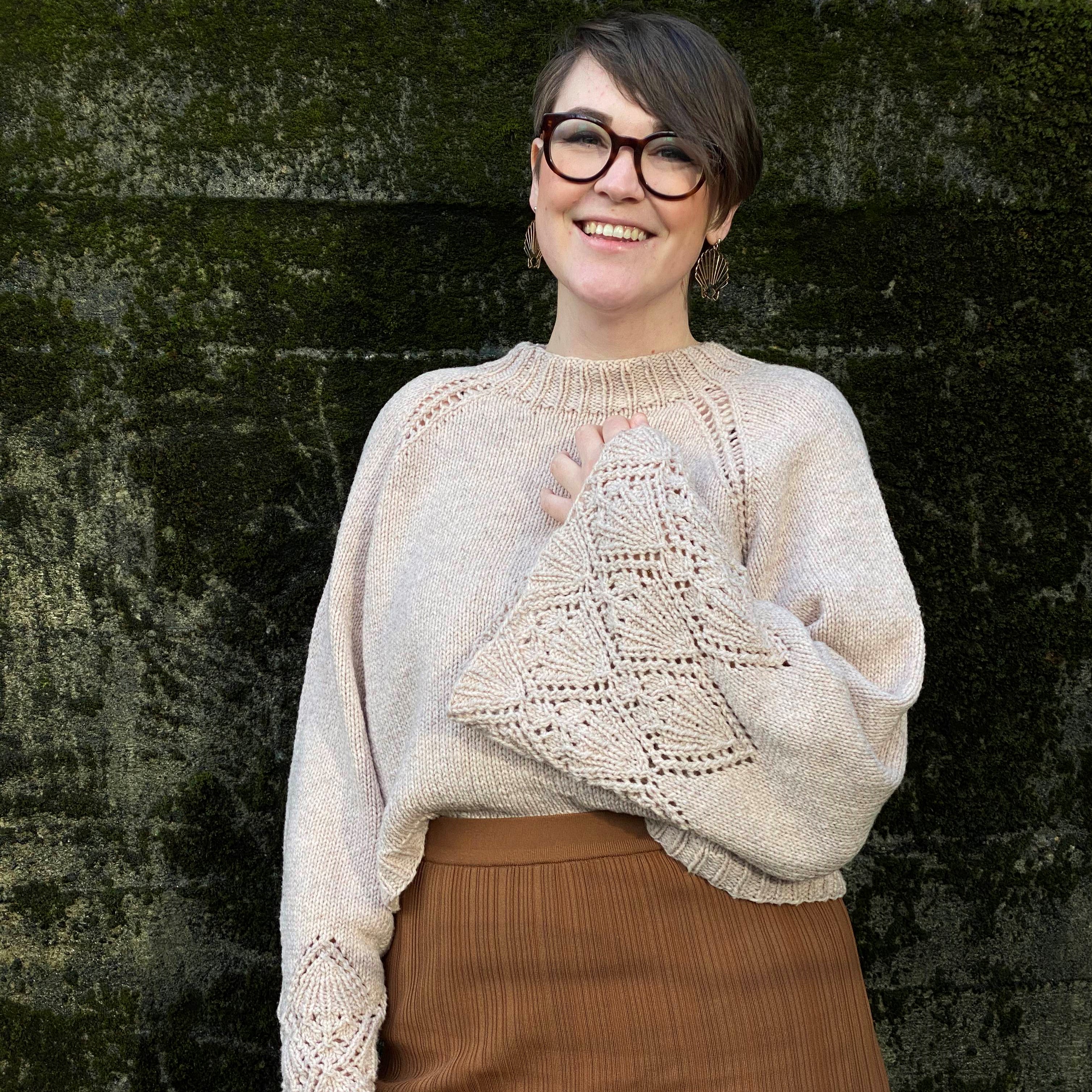
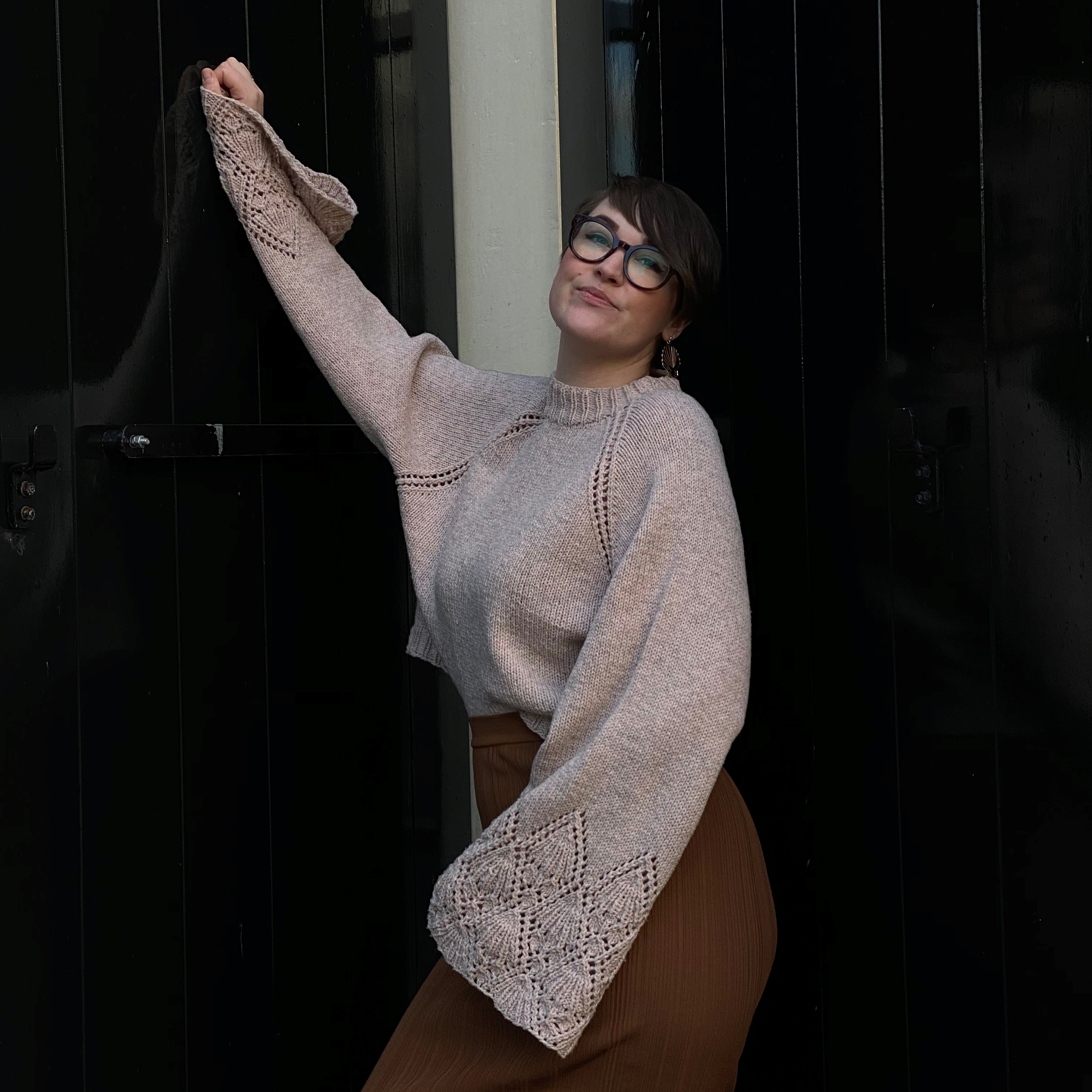
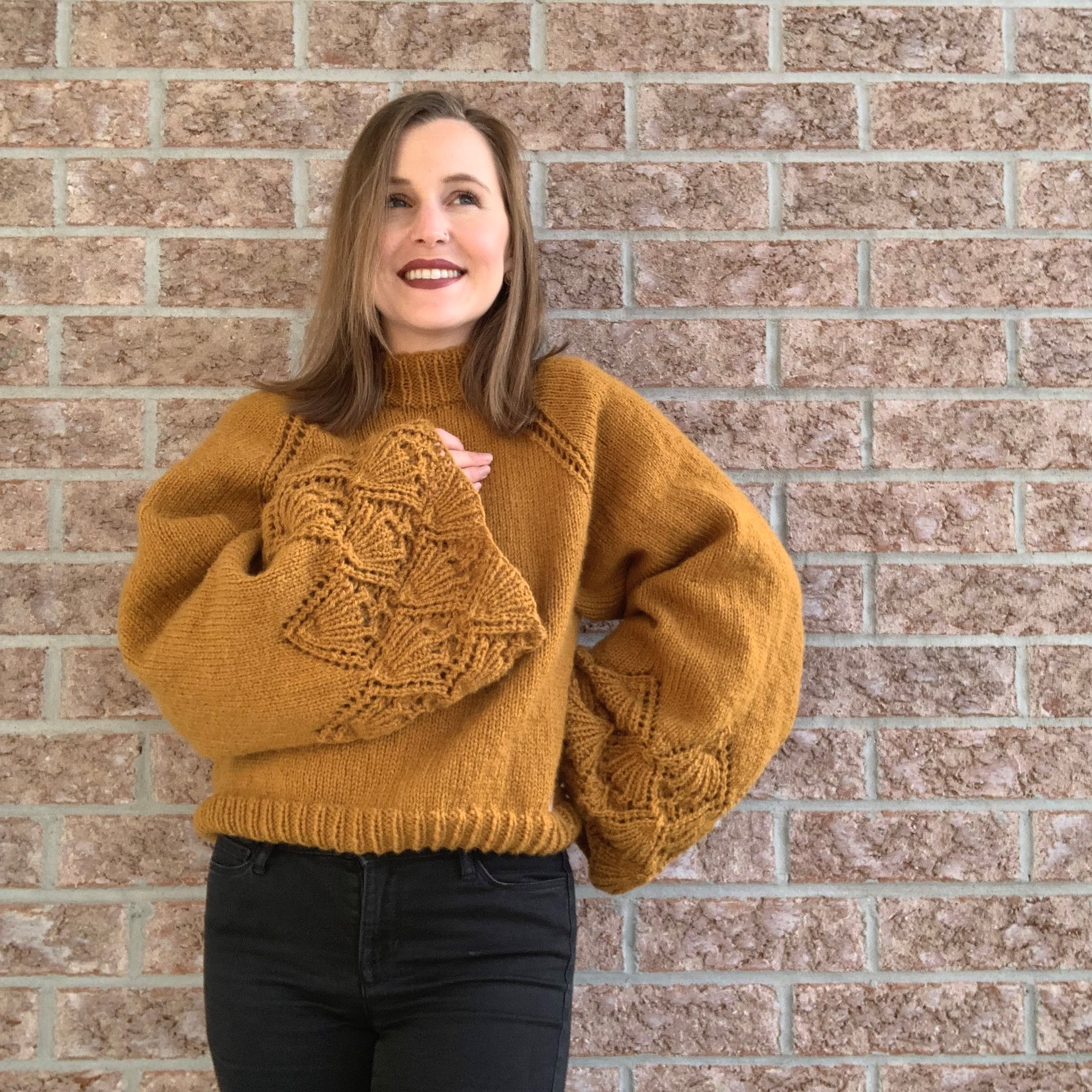
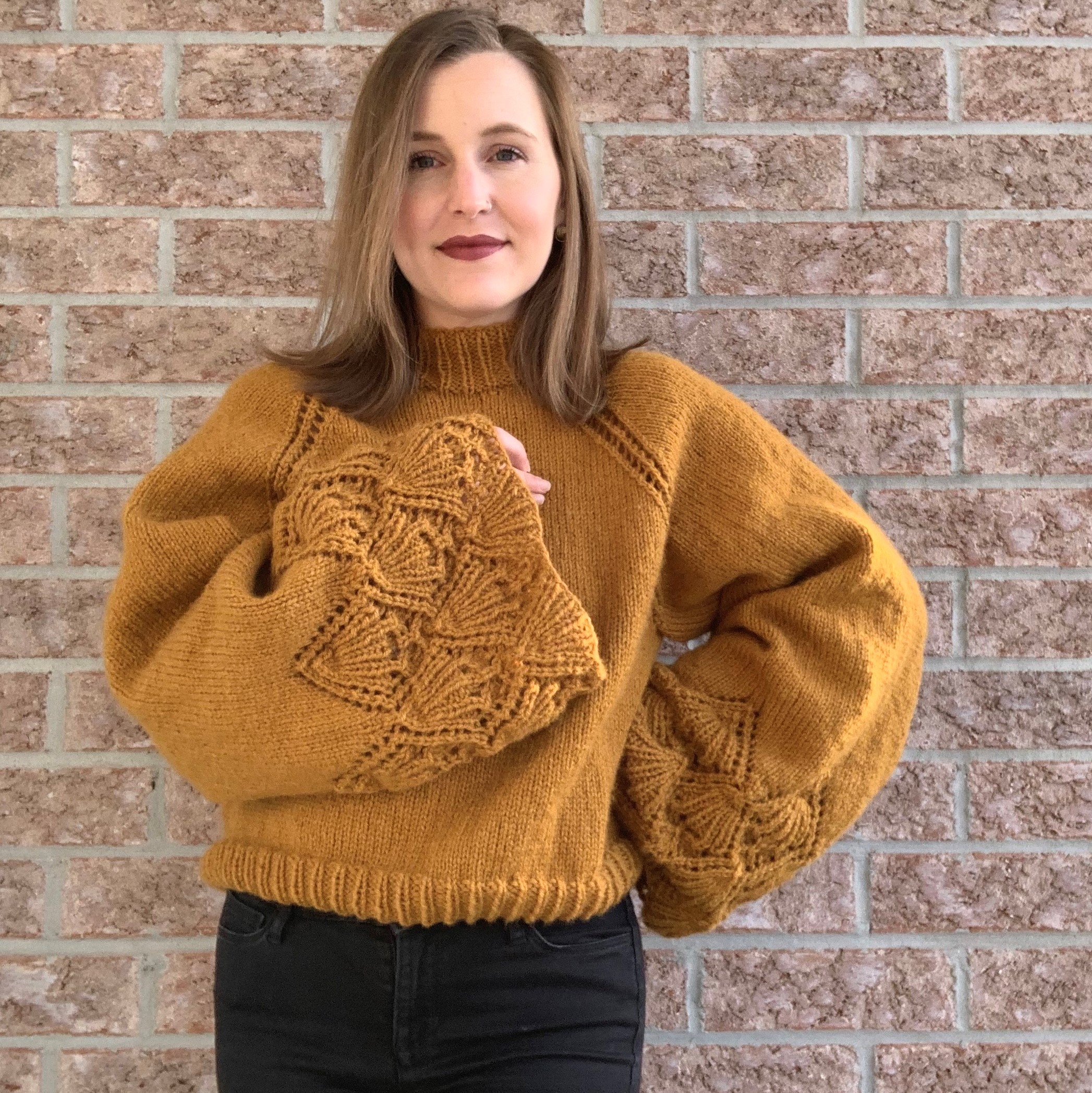
No Comments